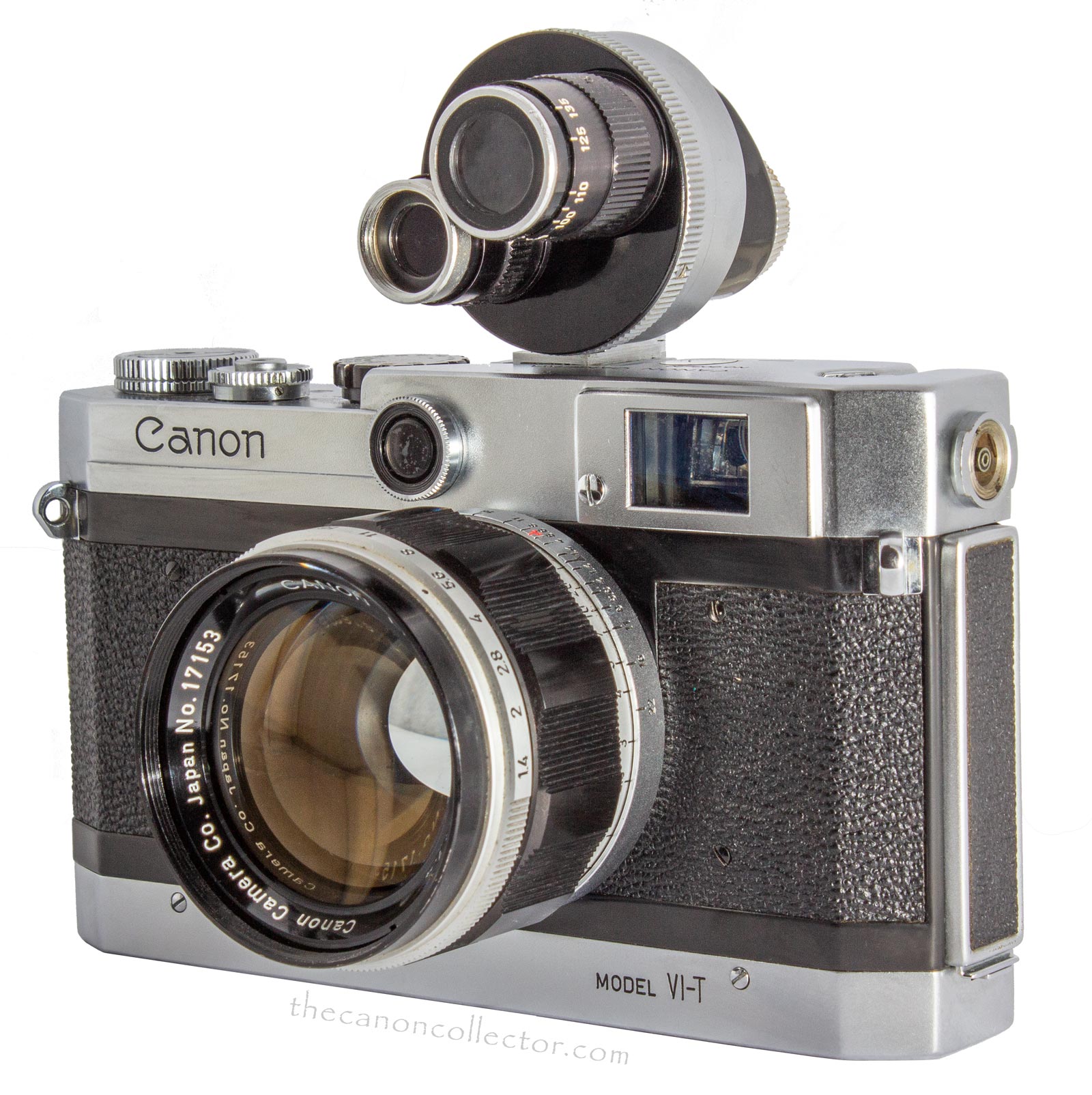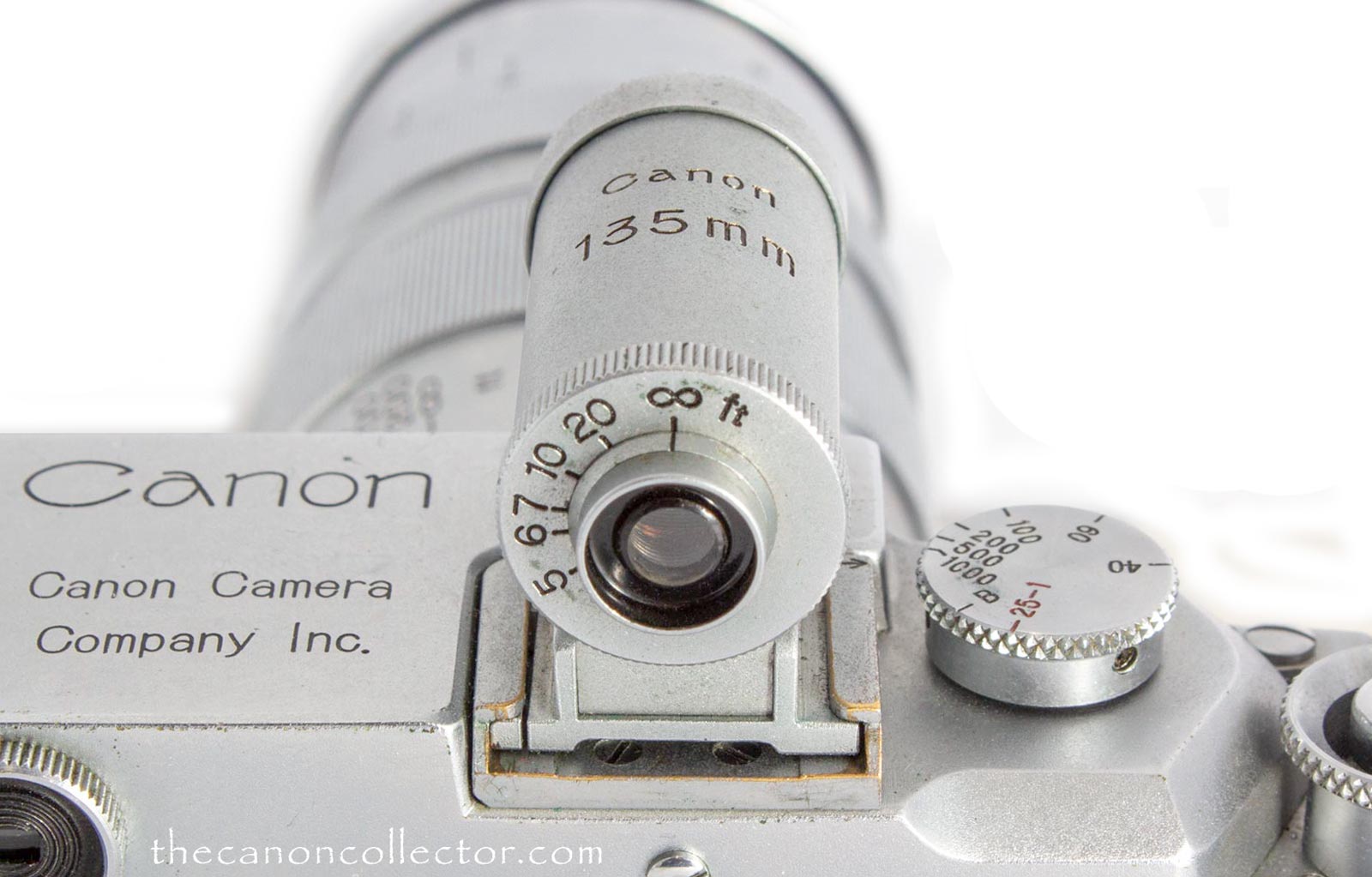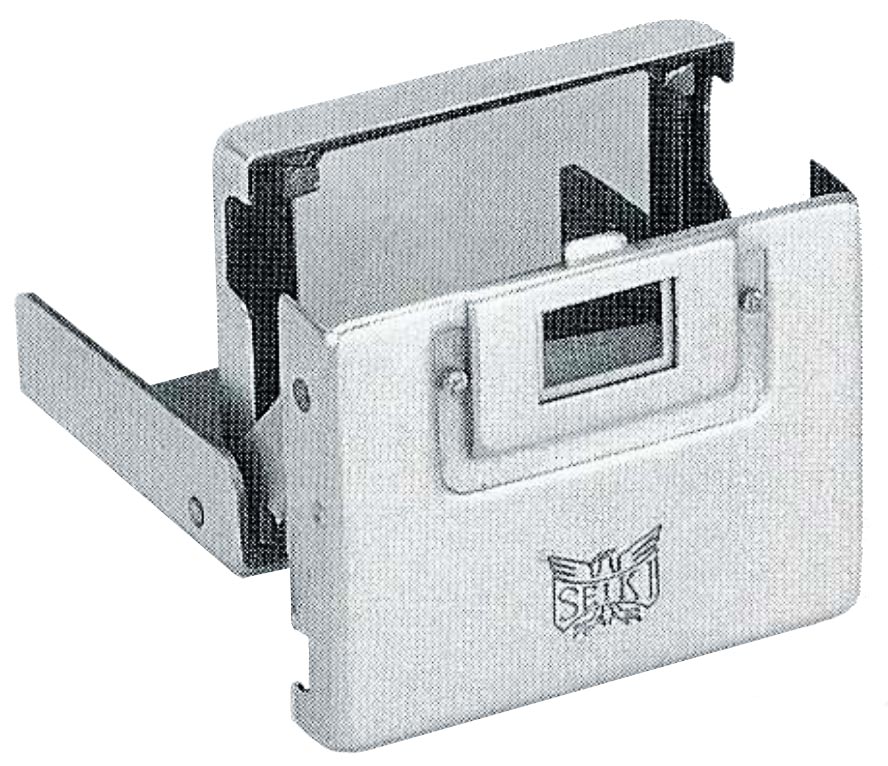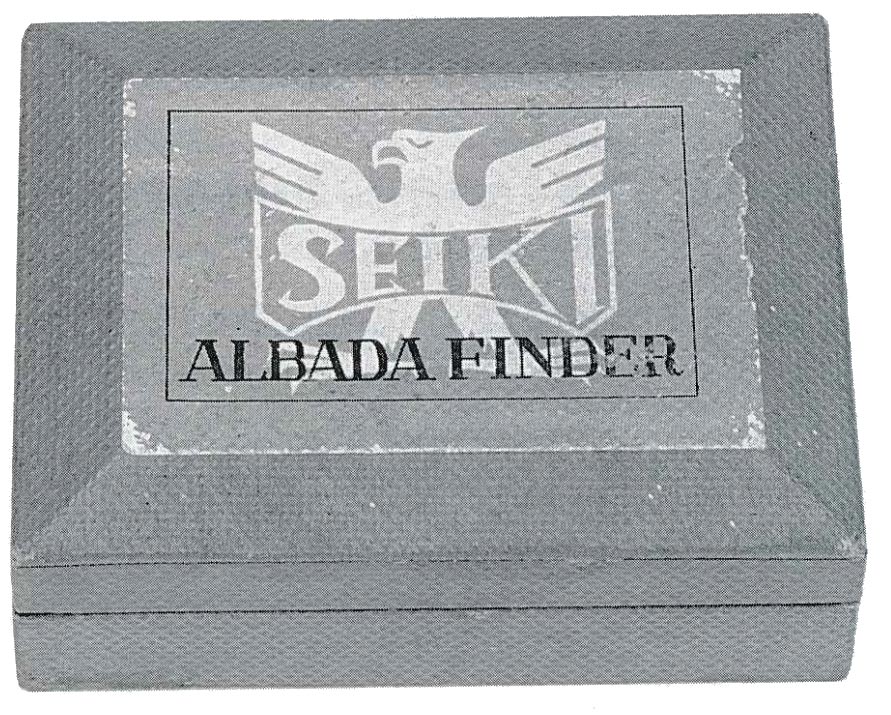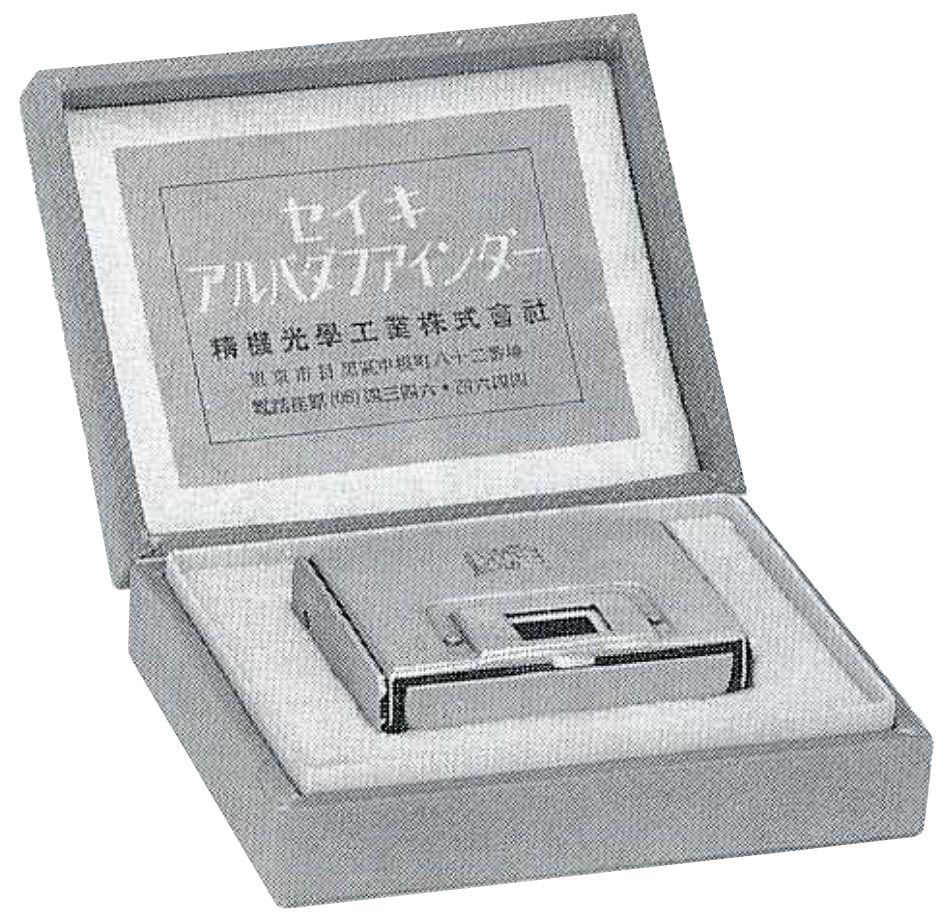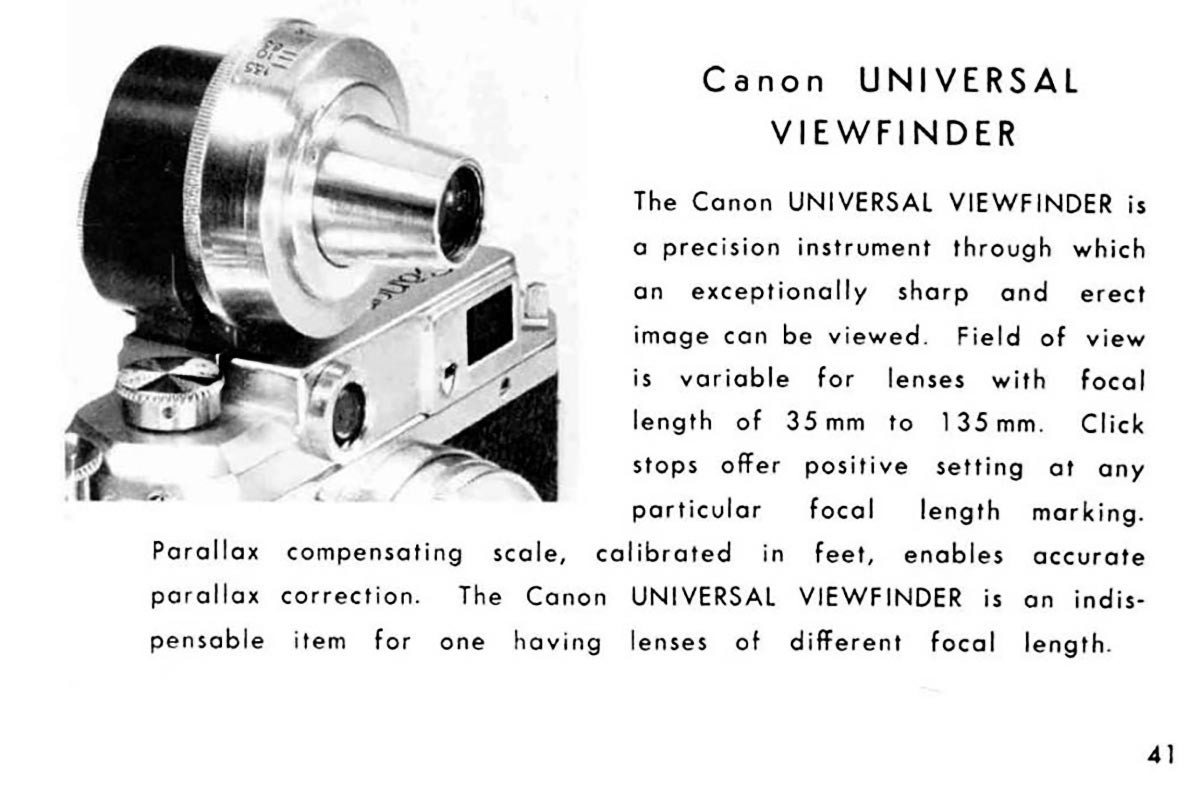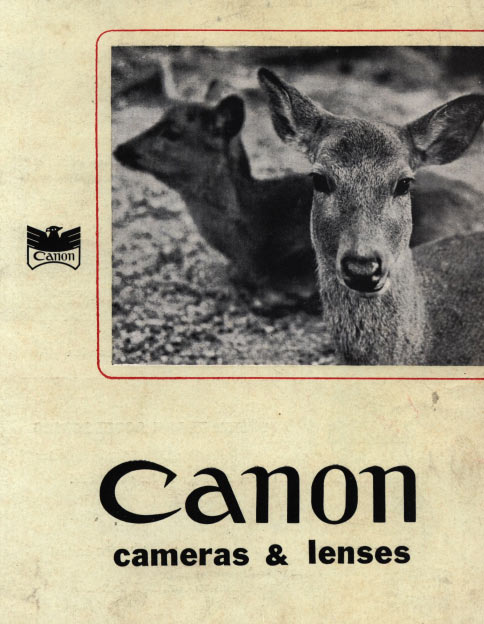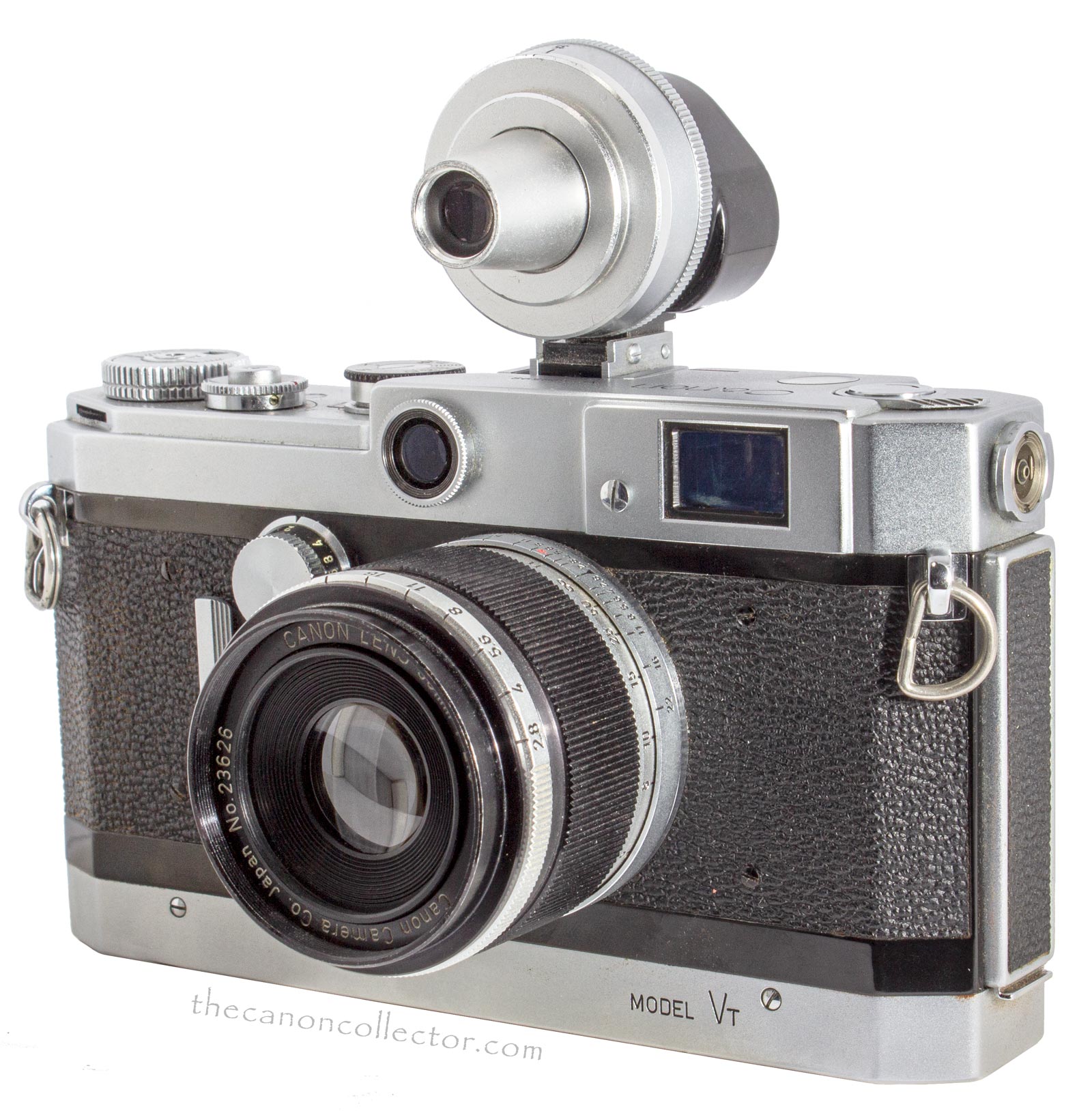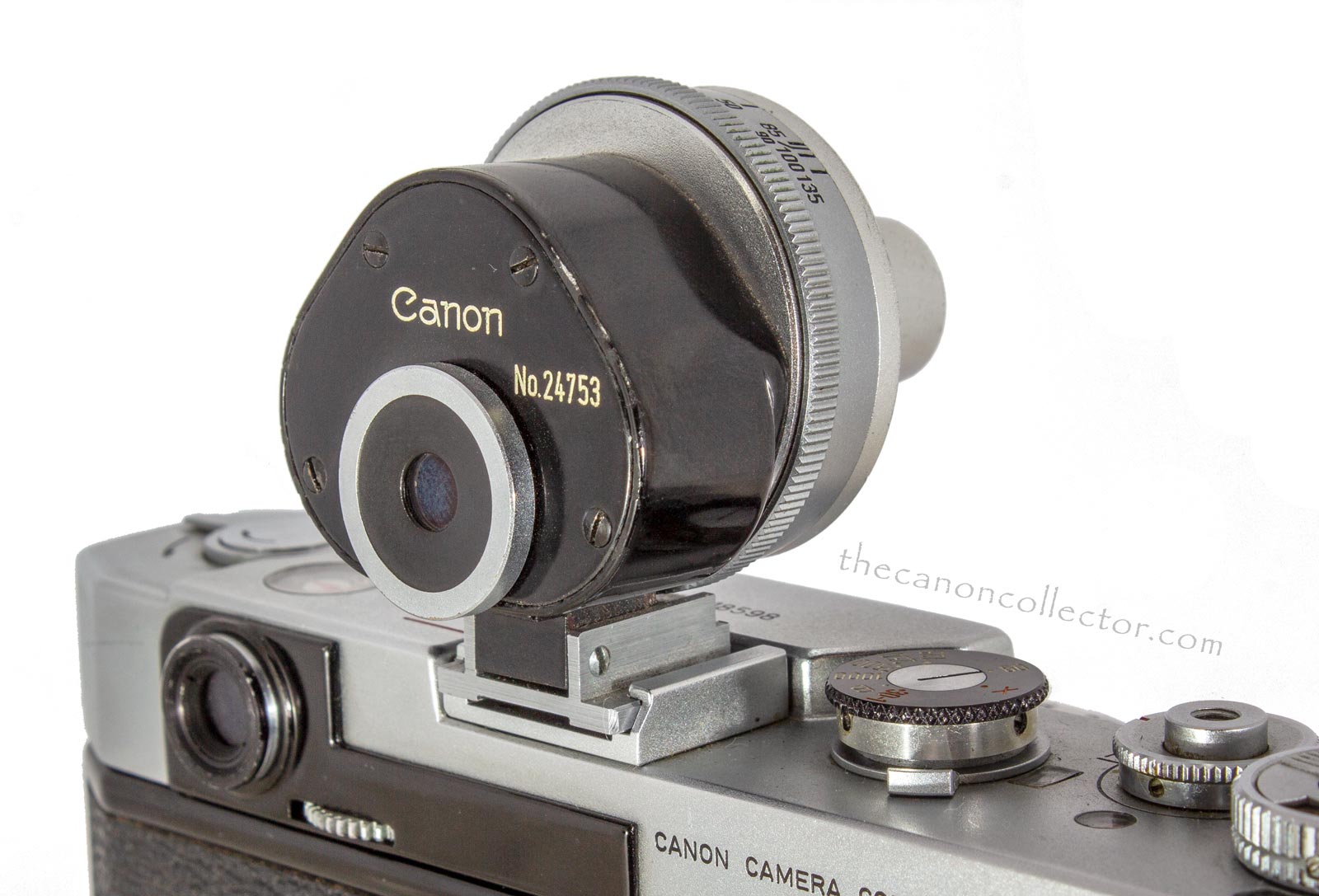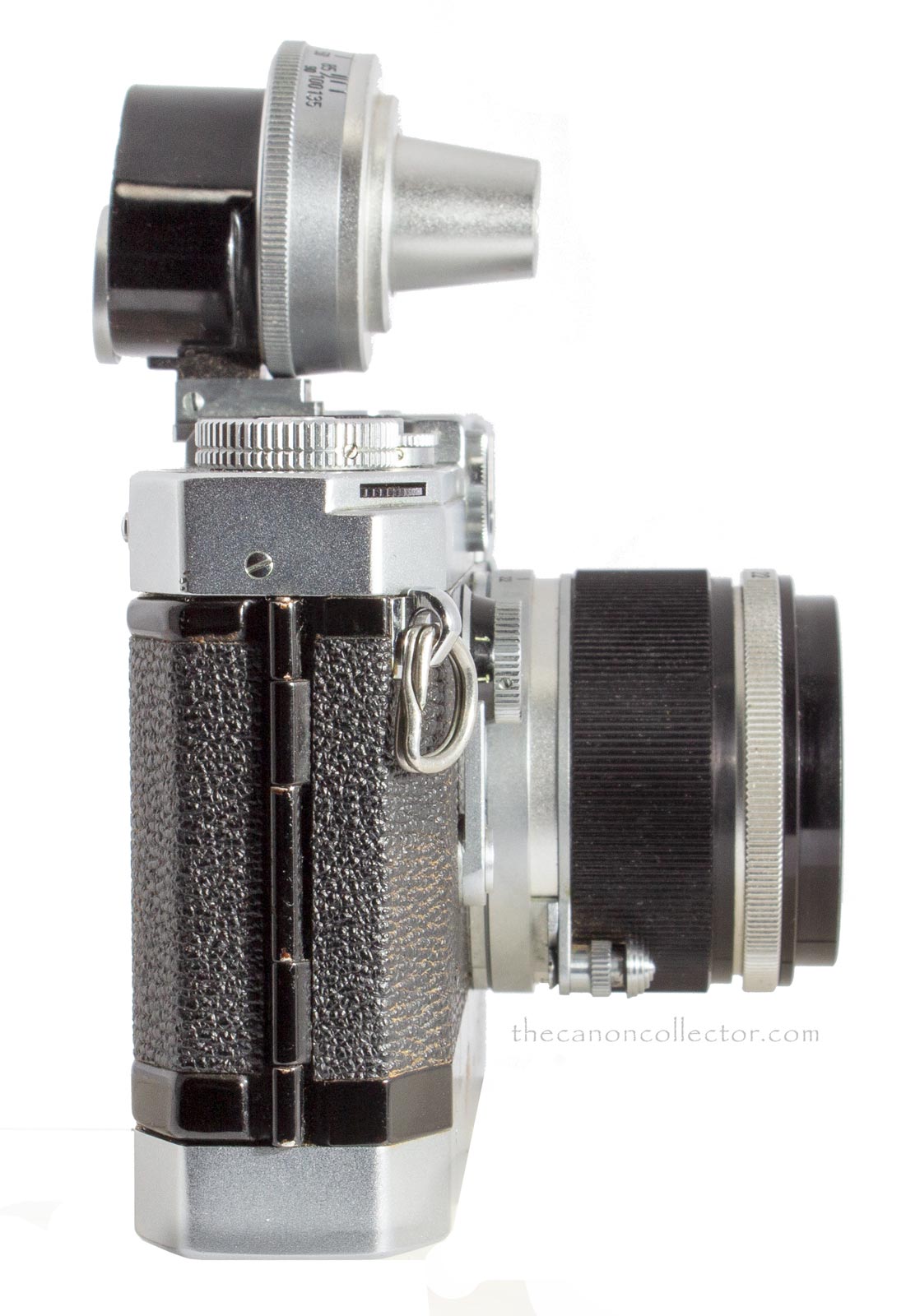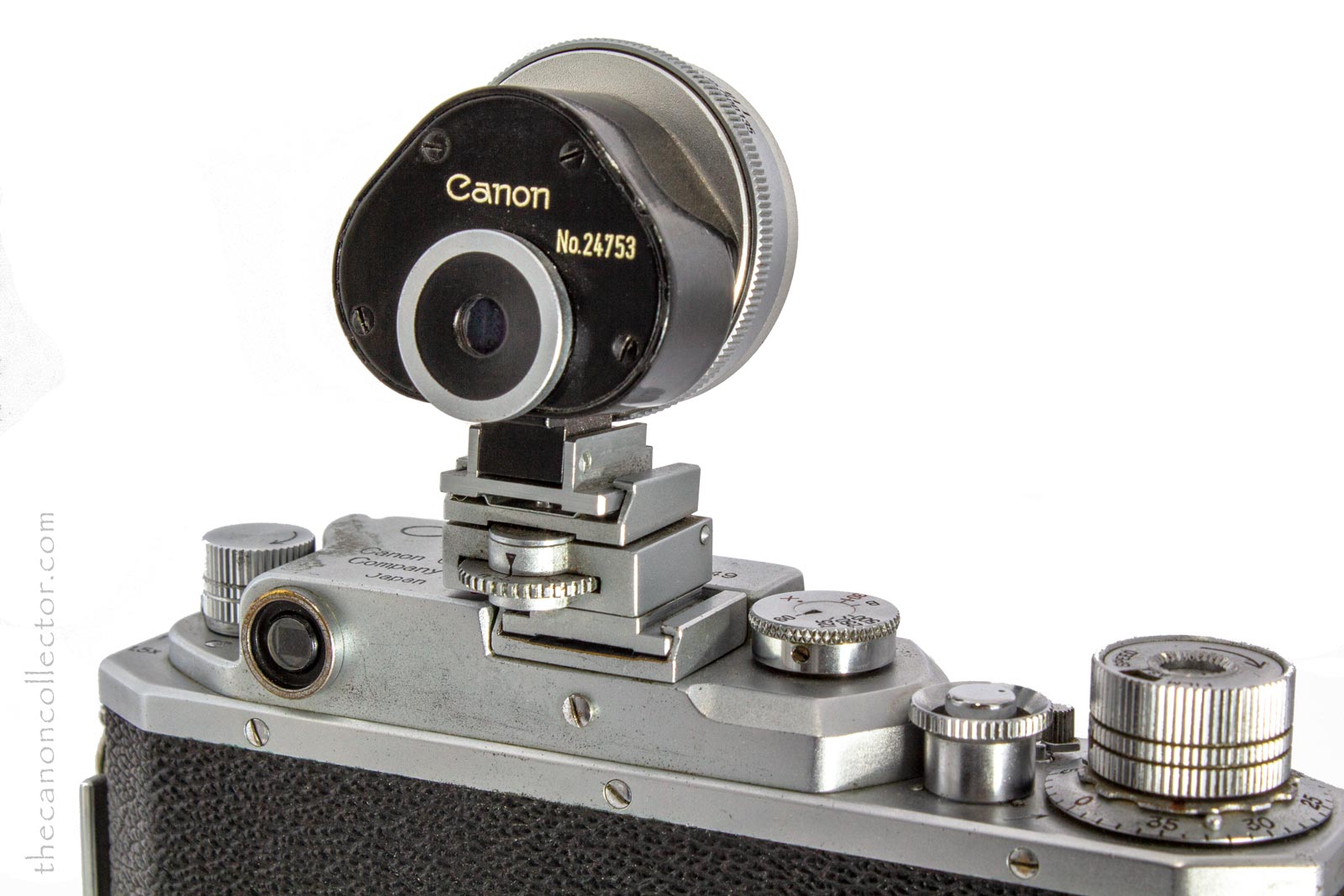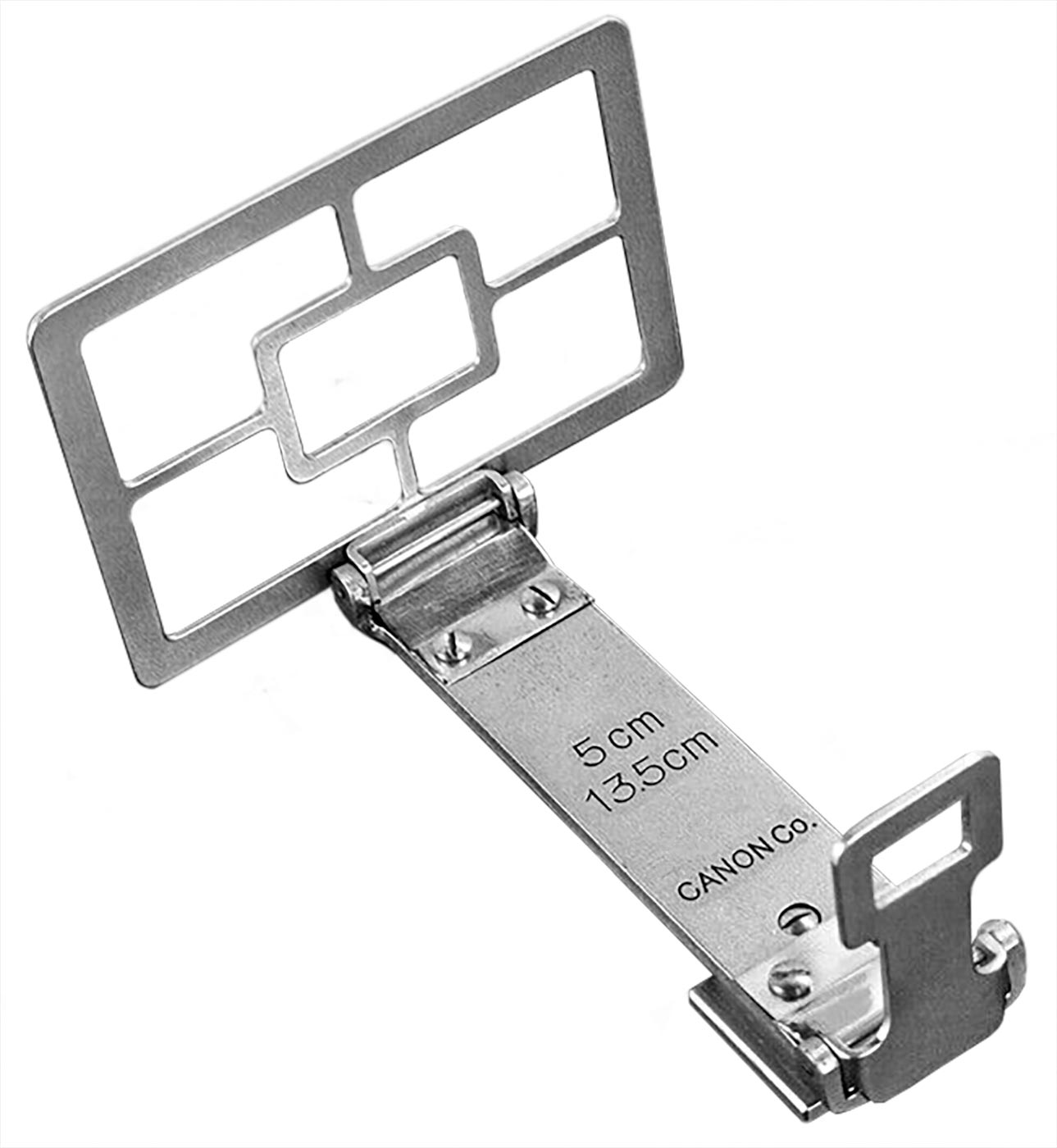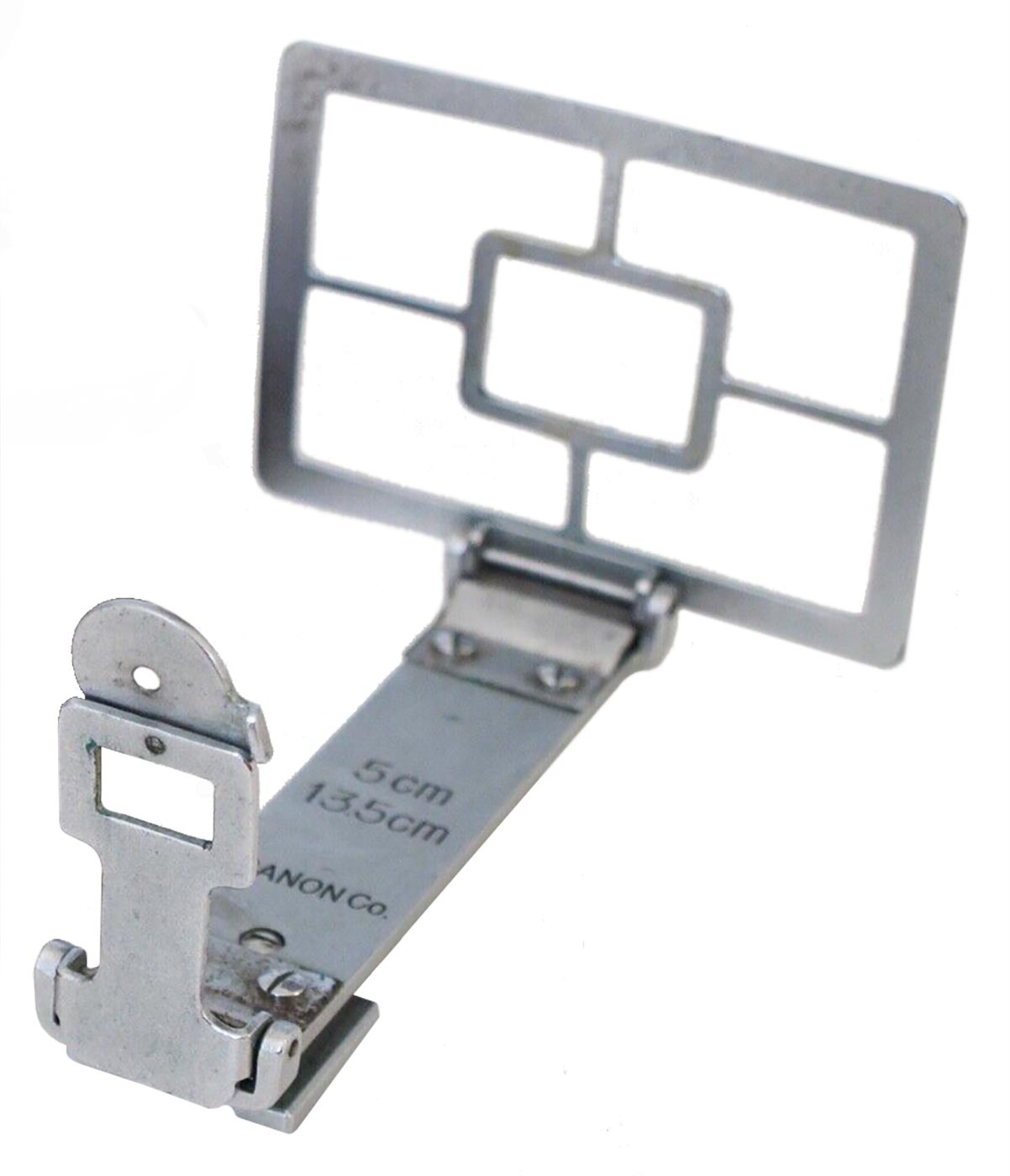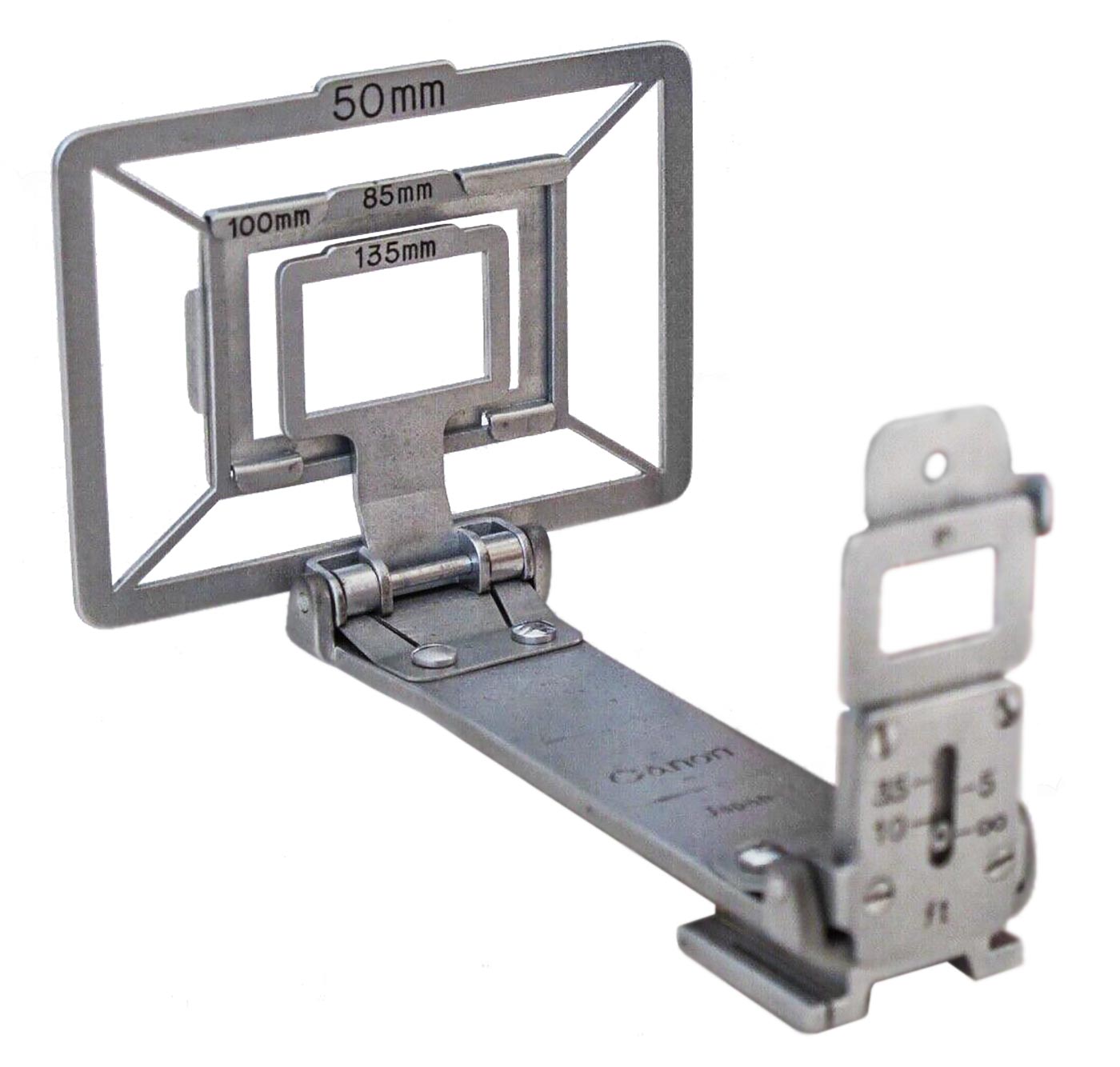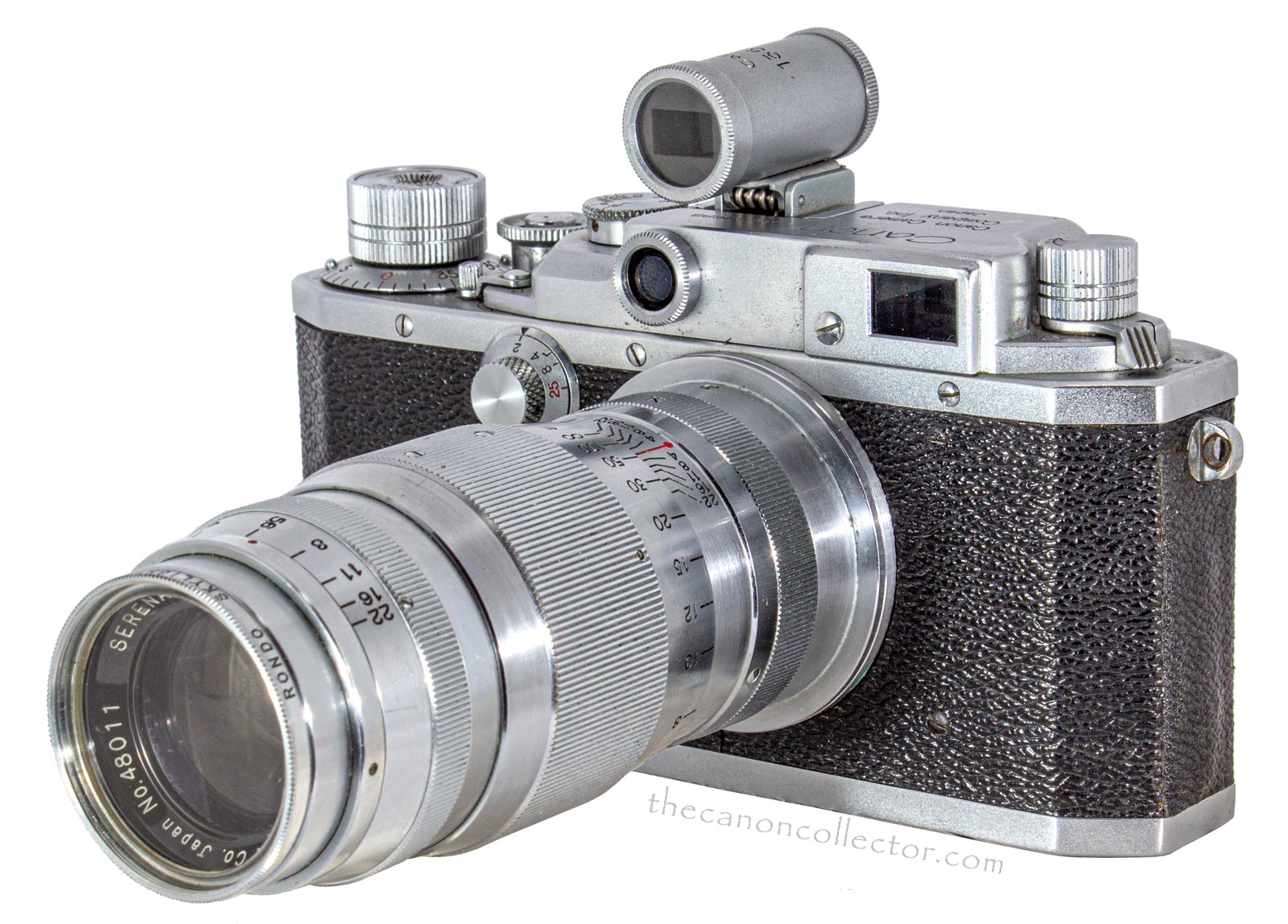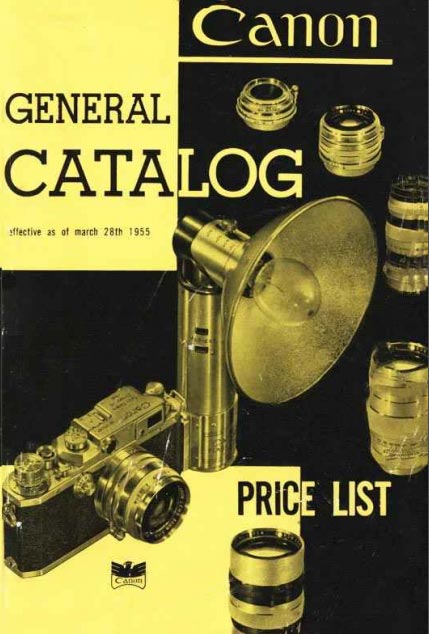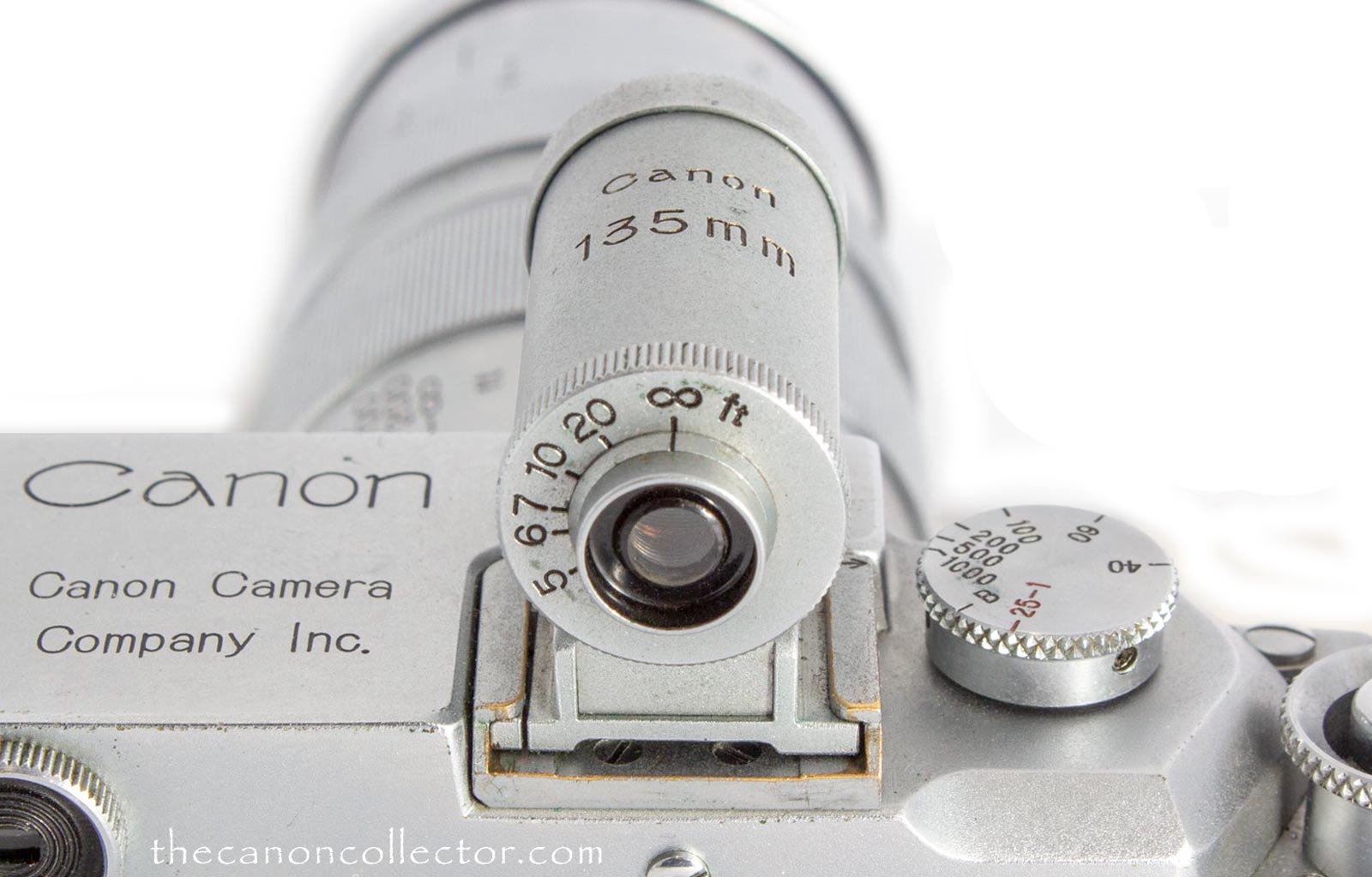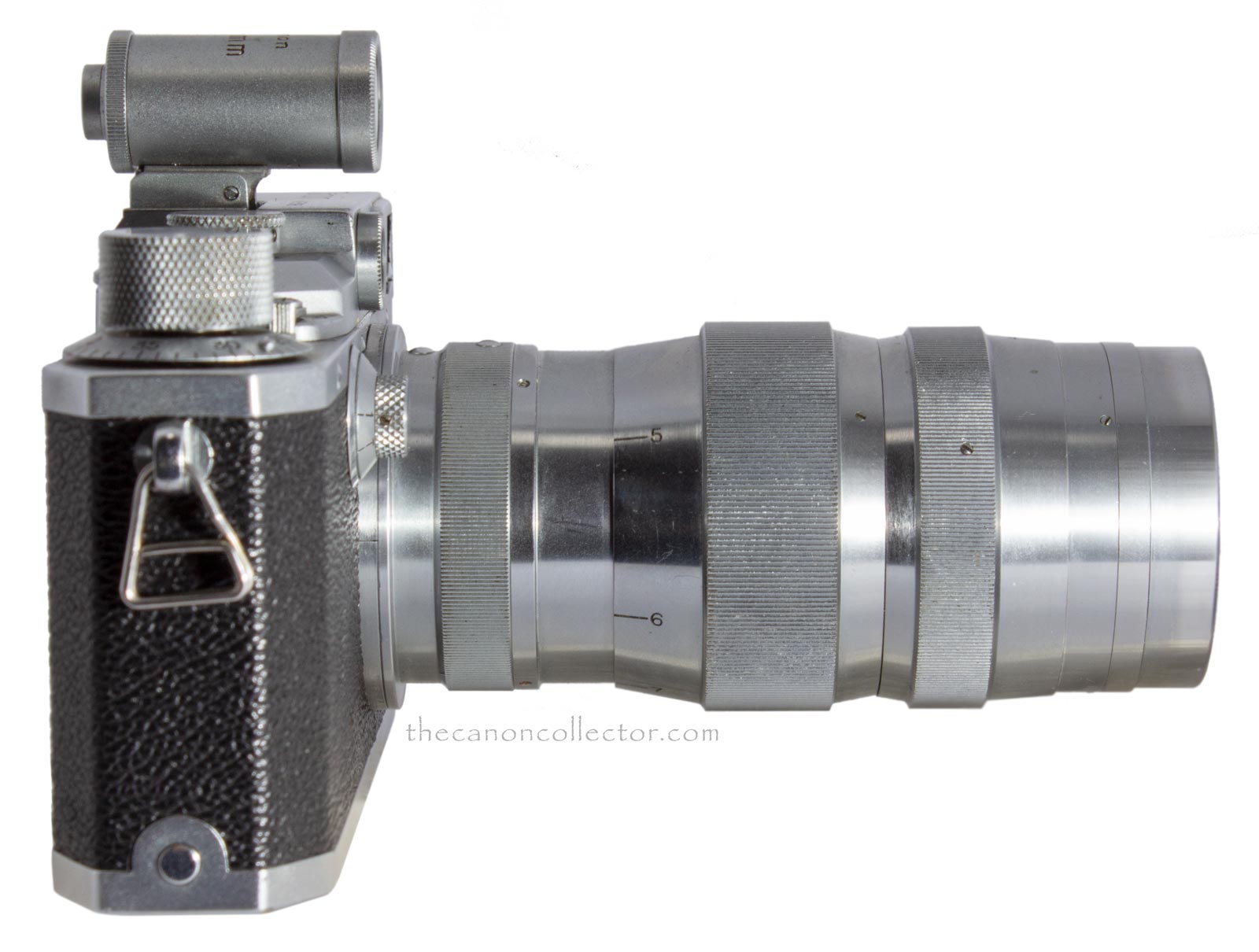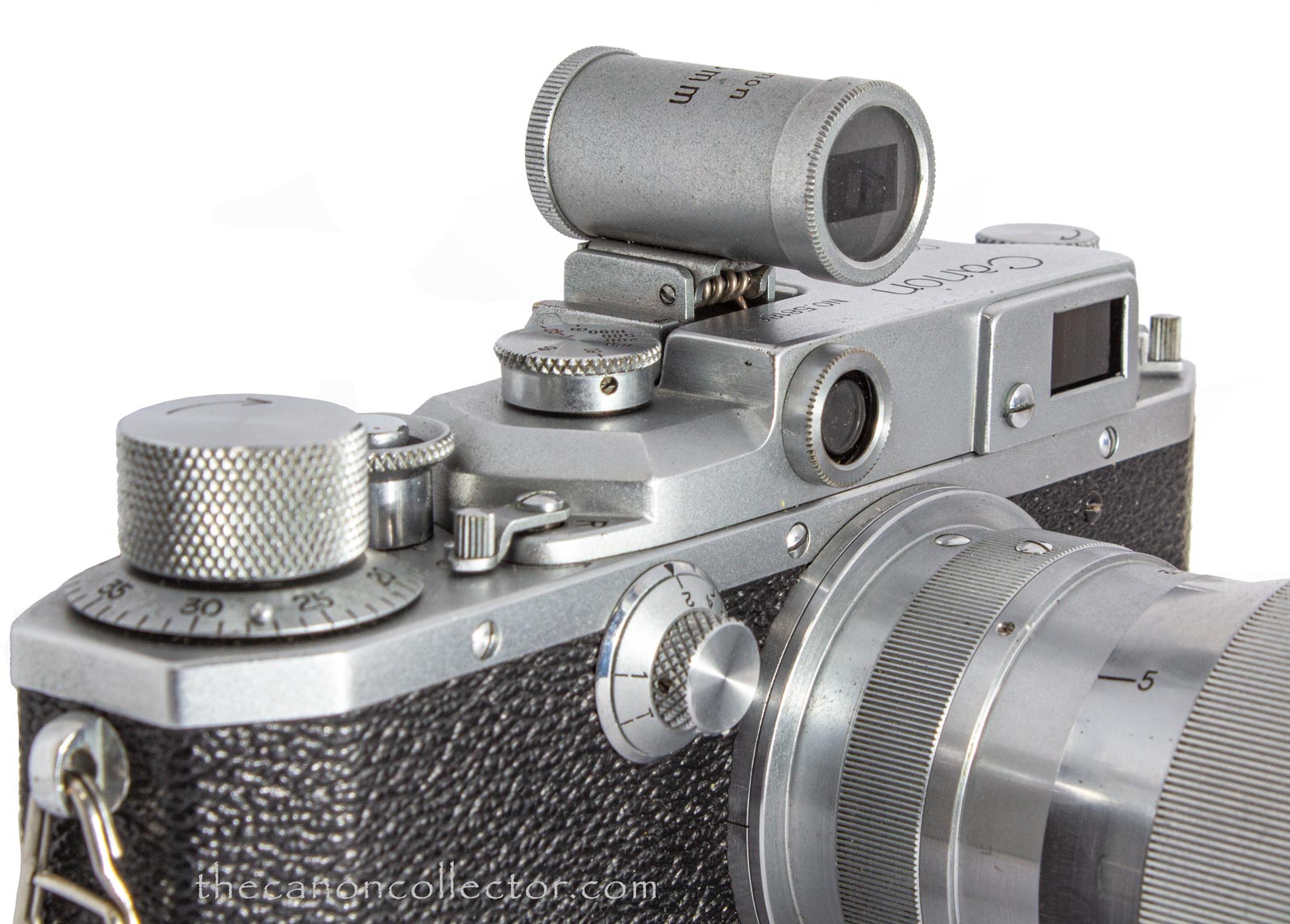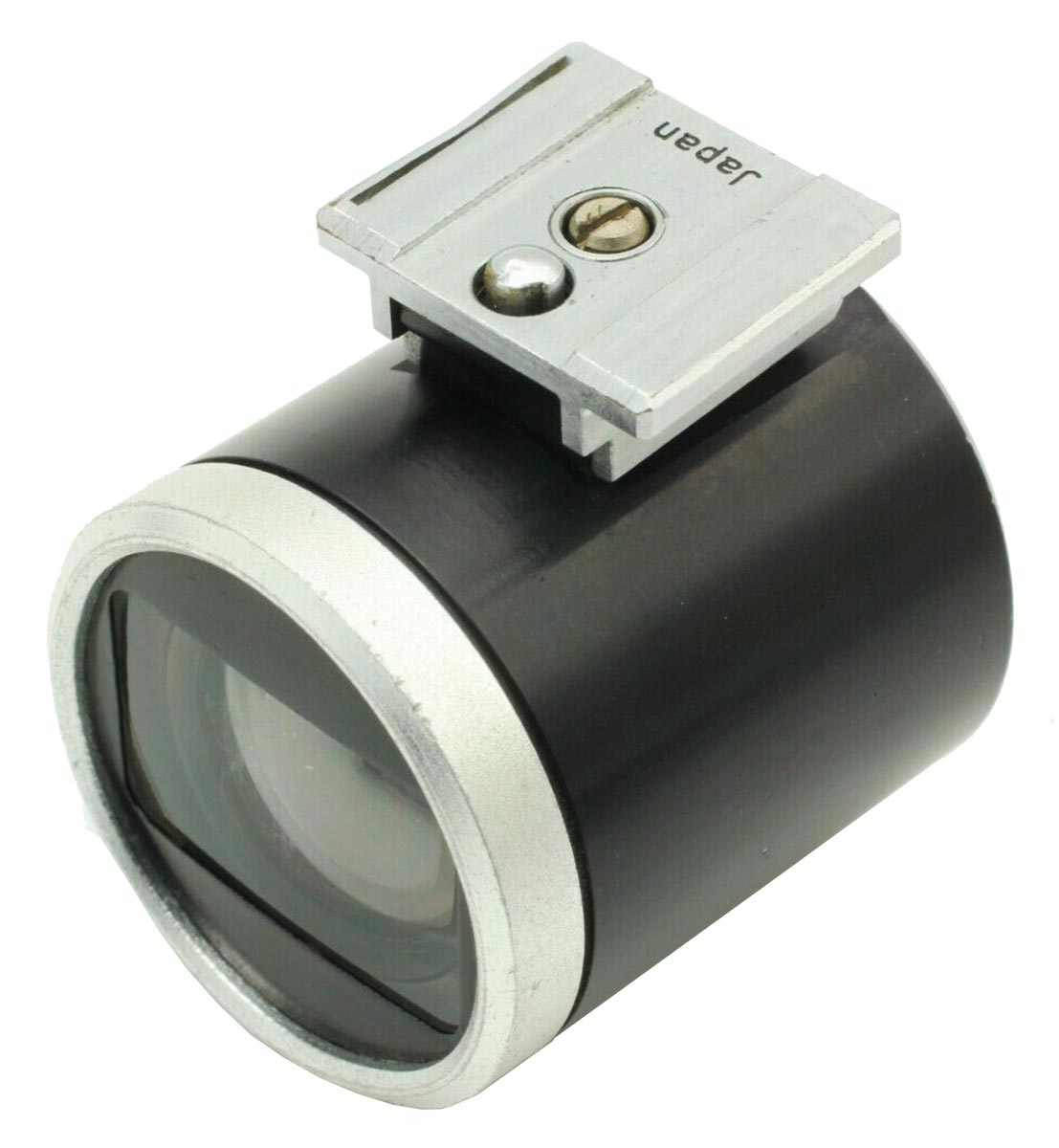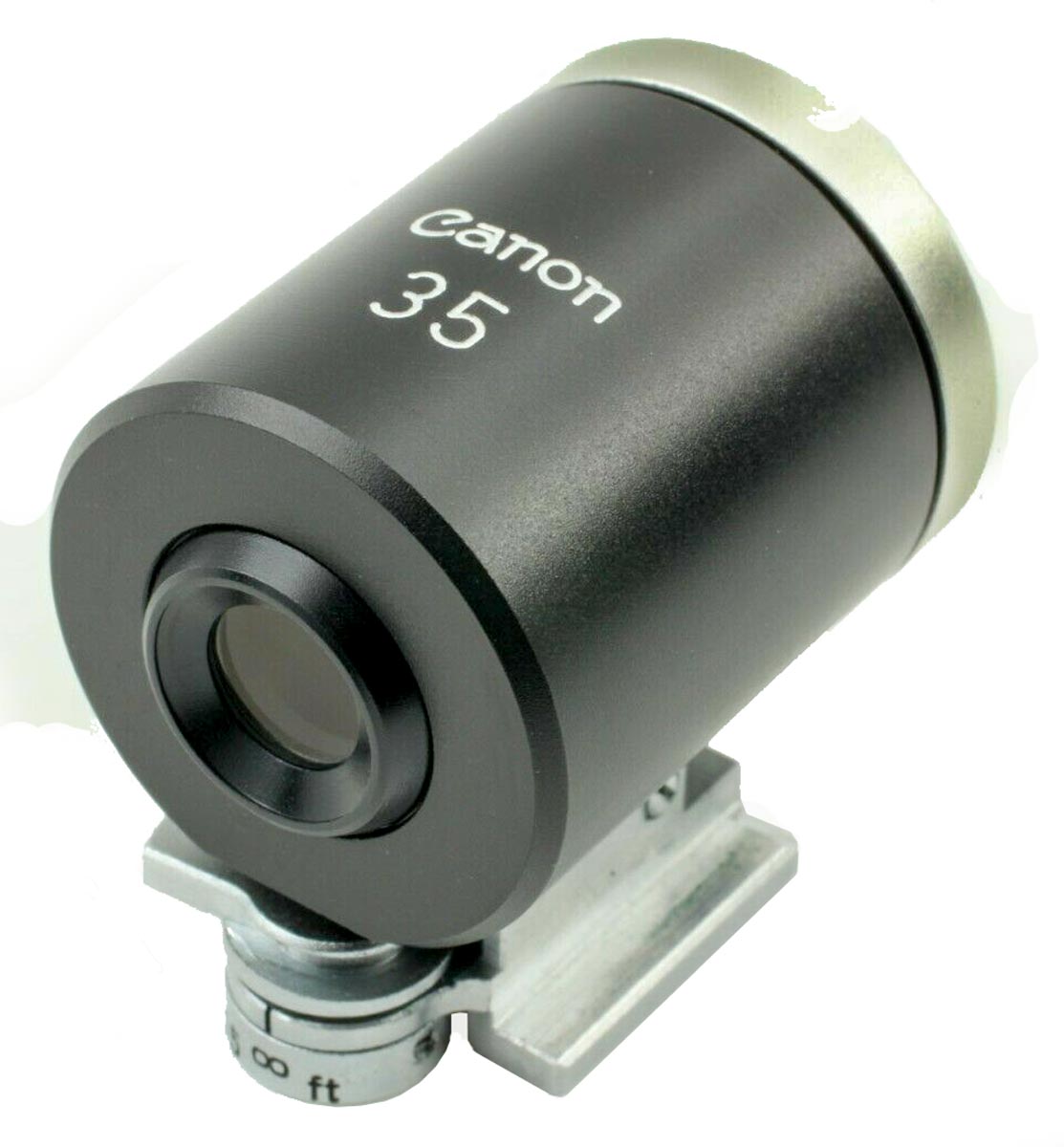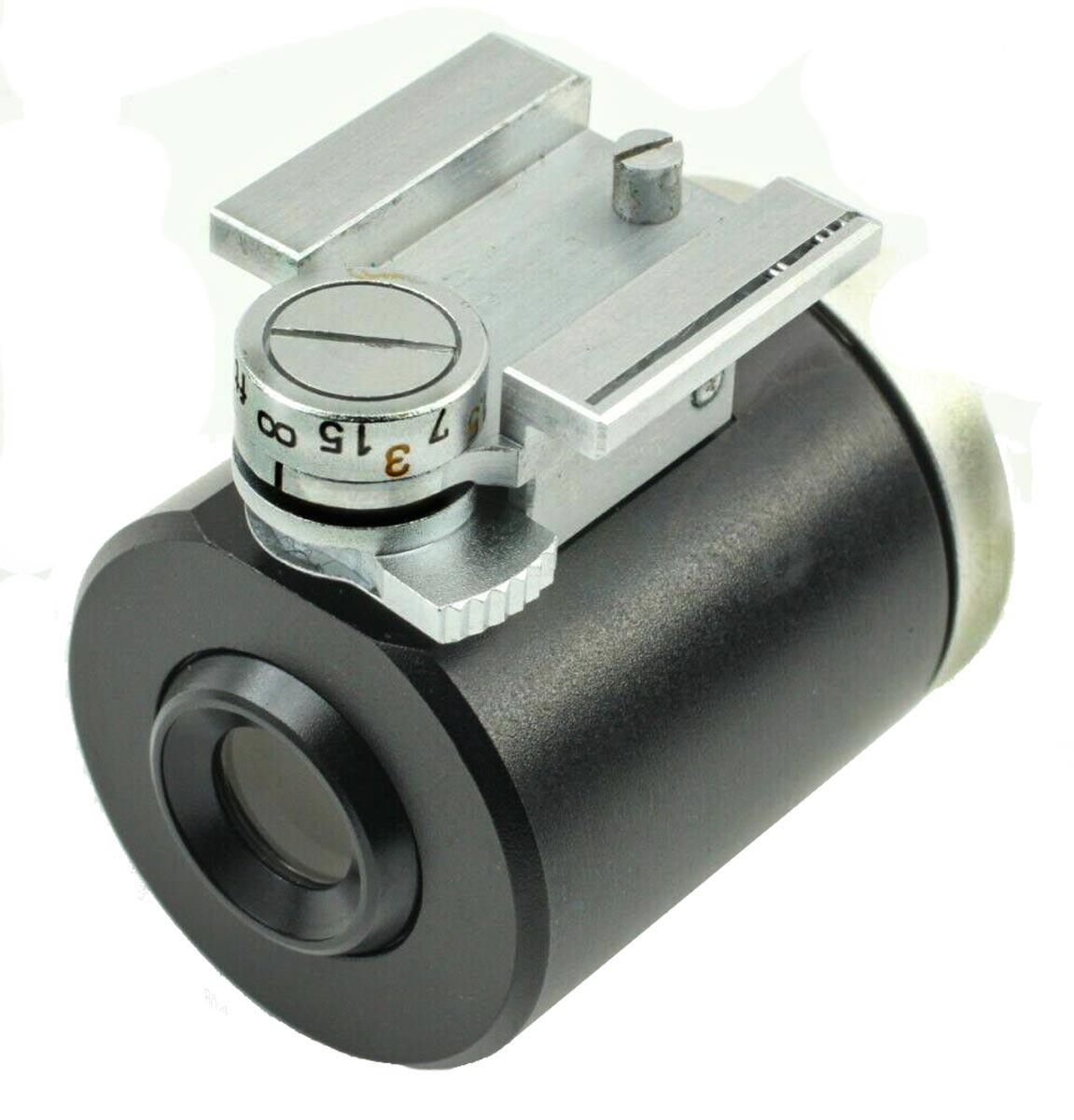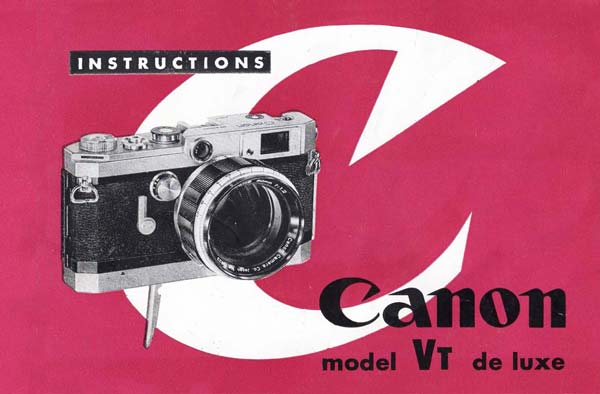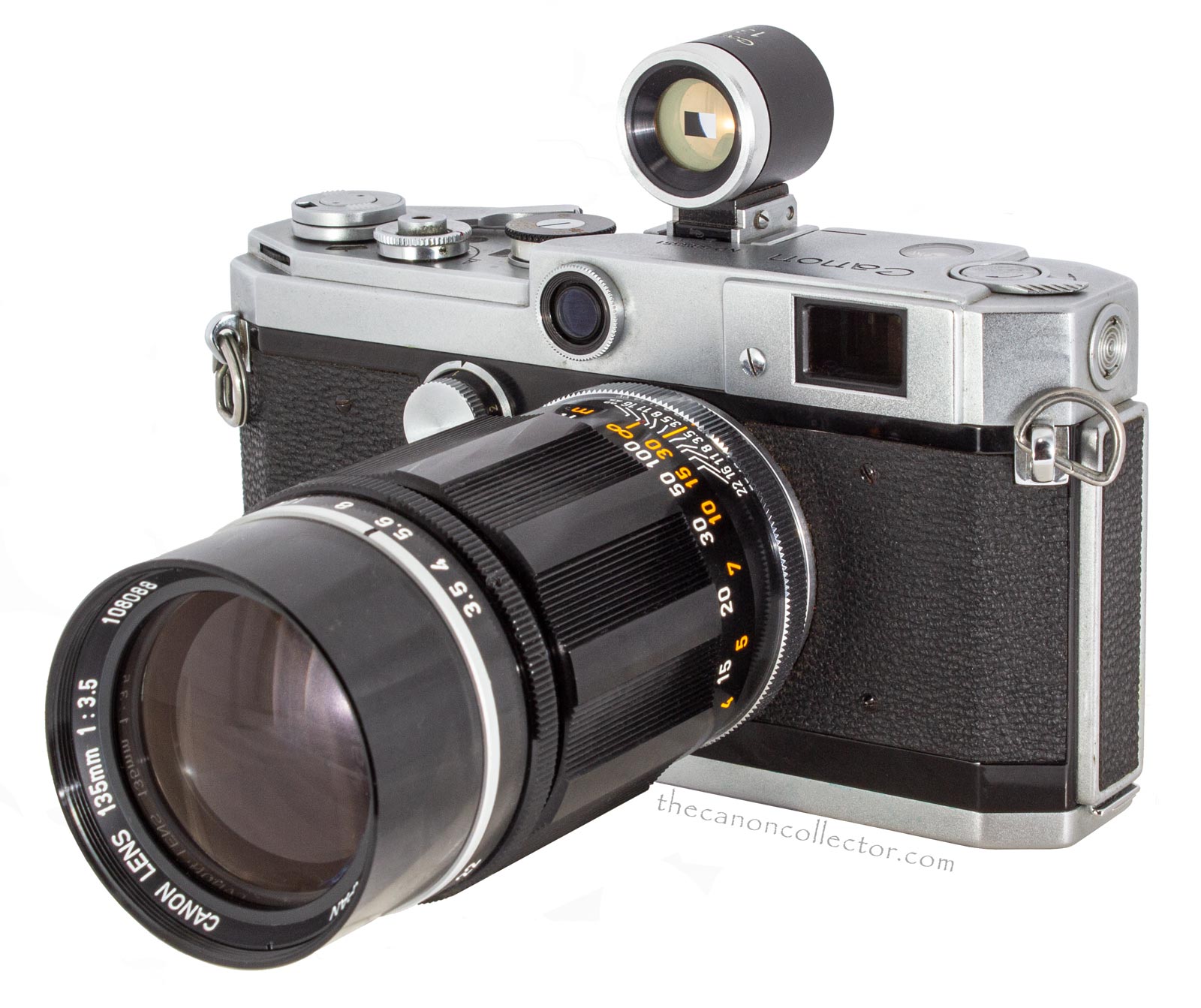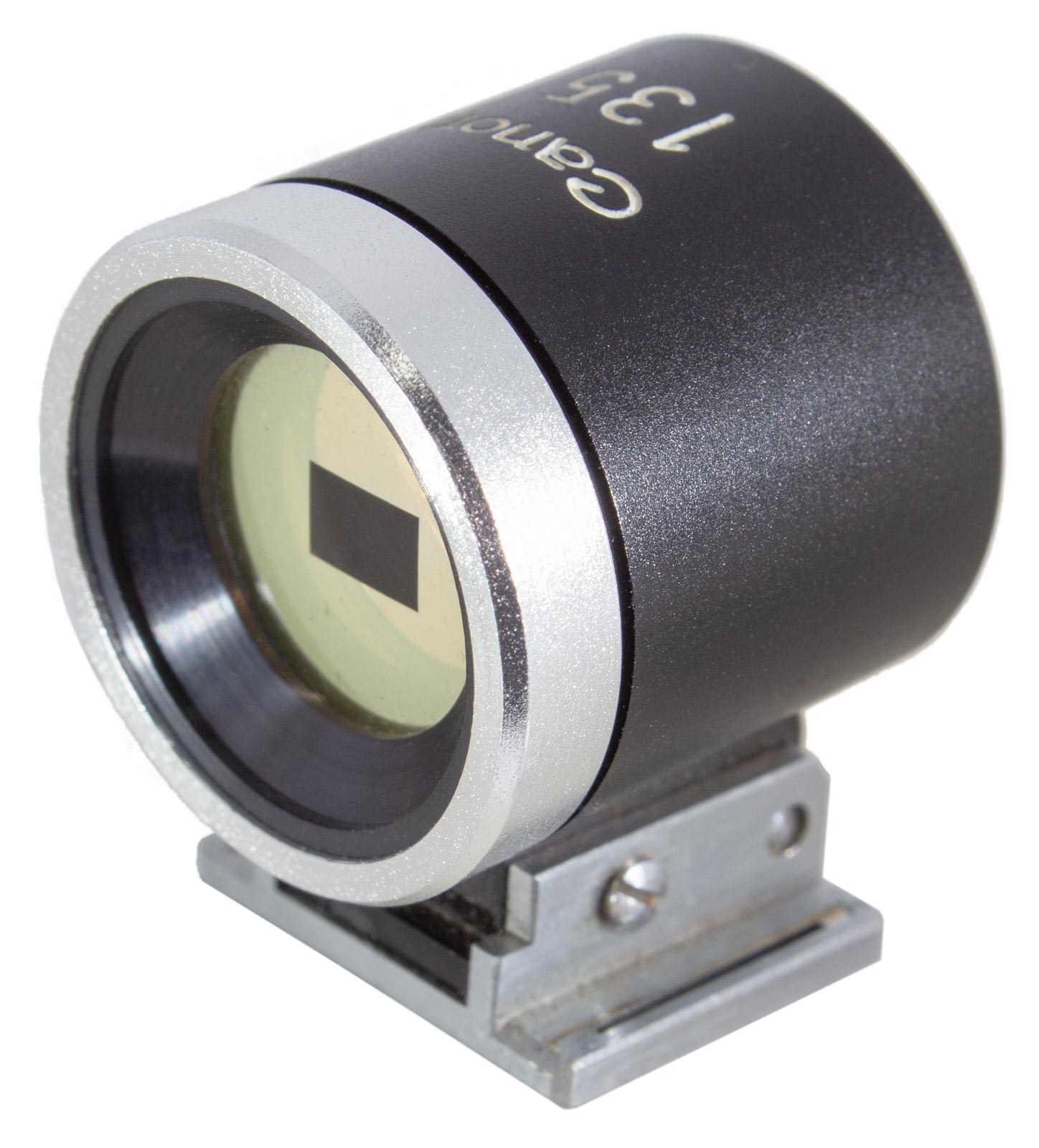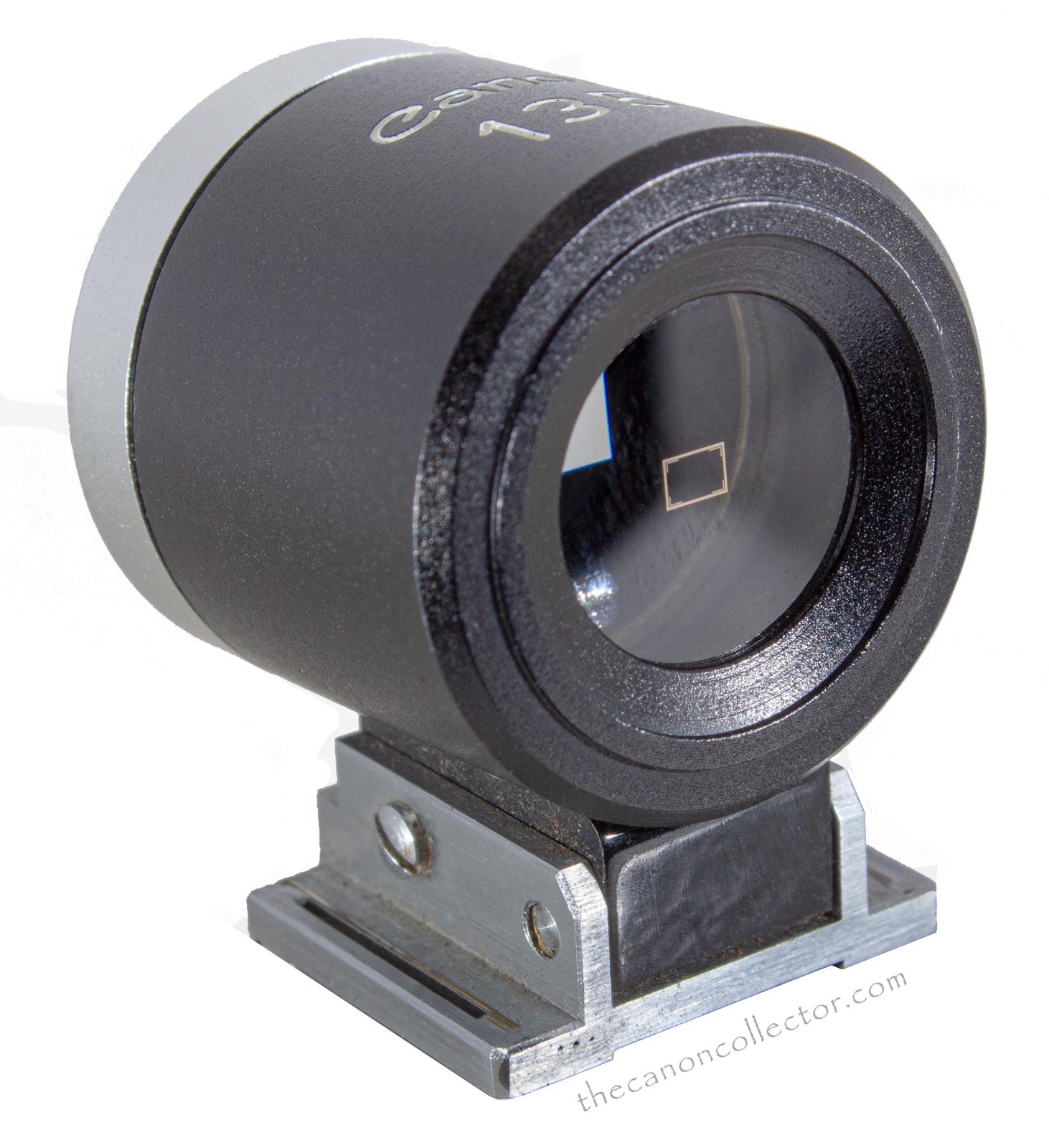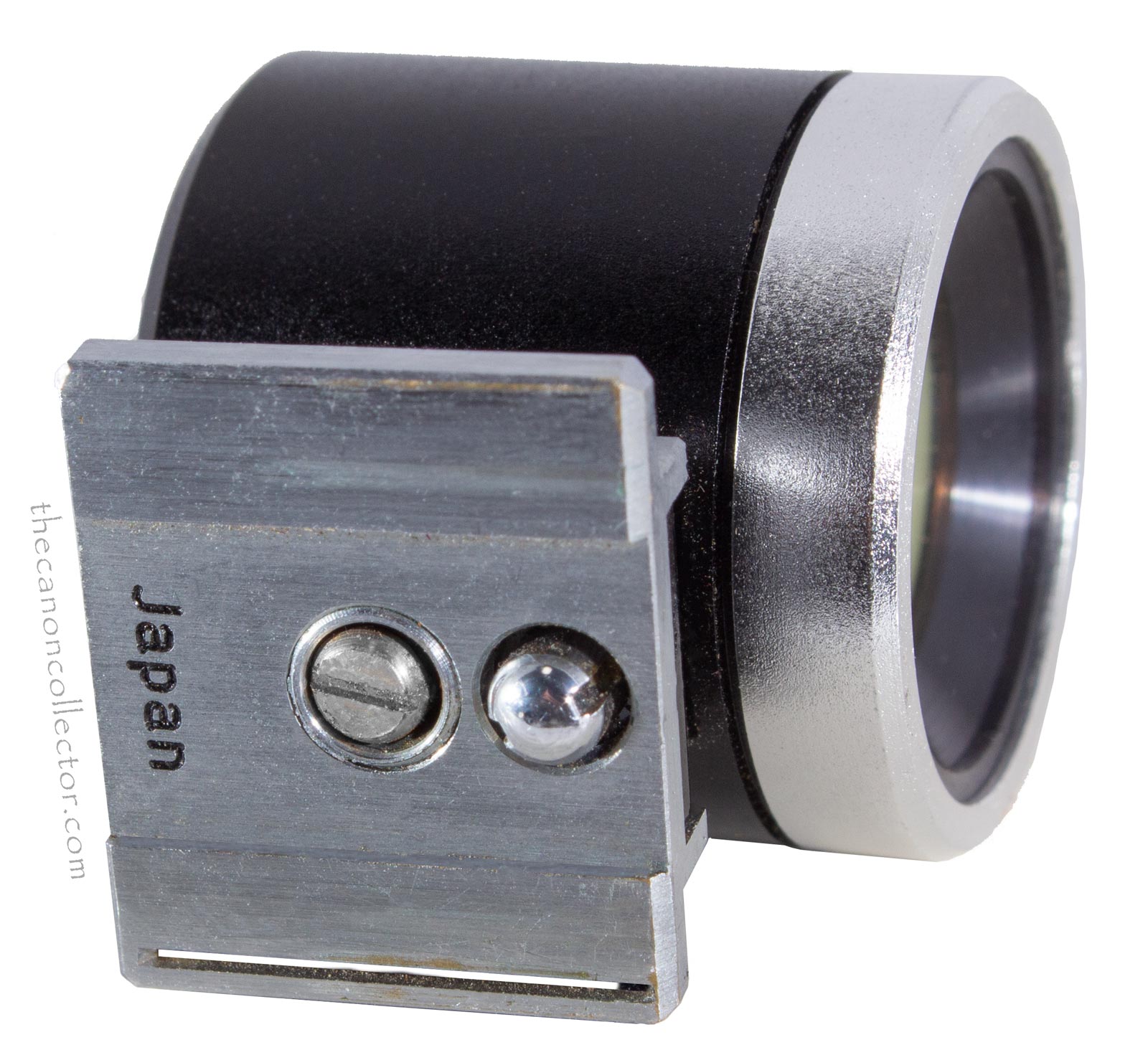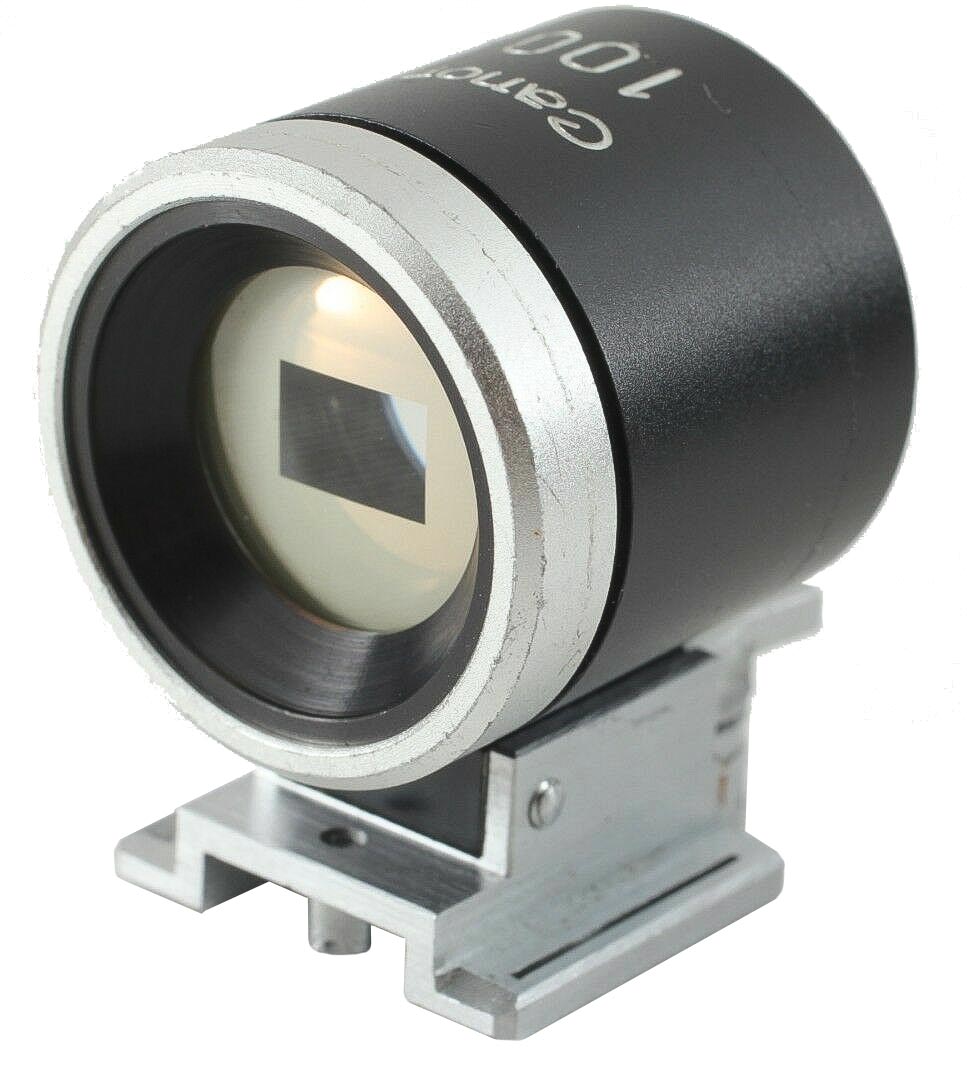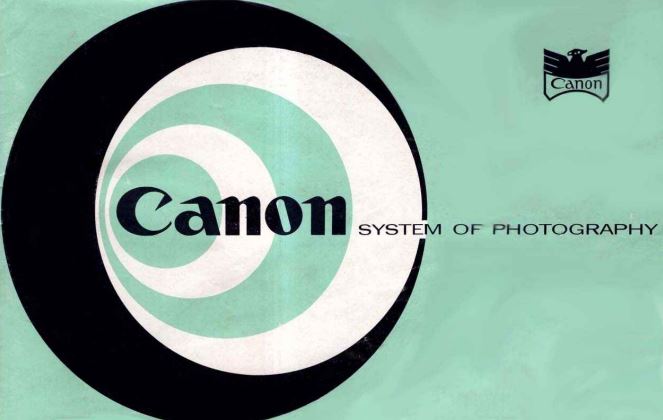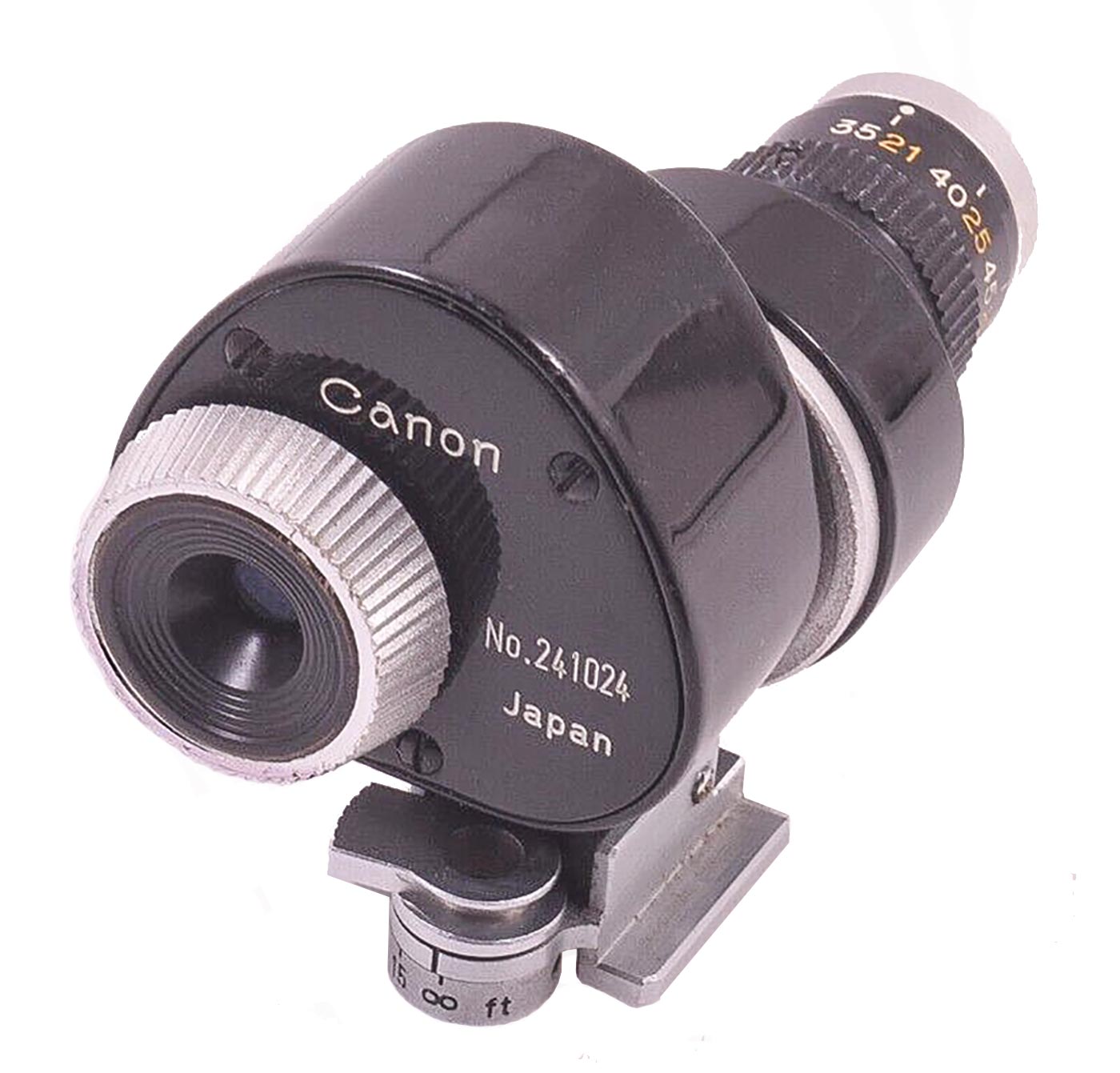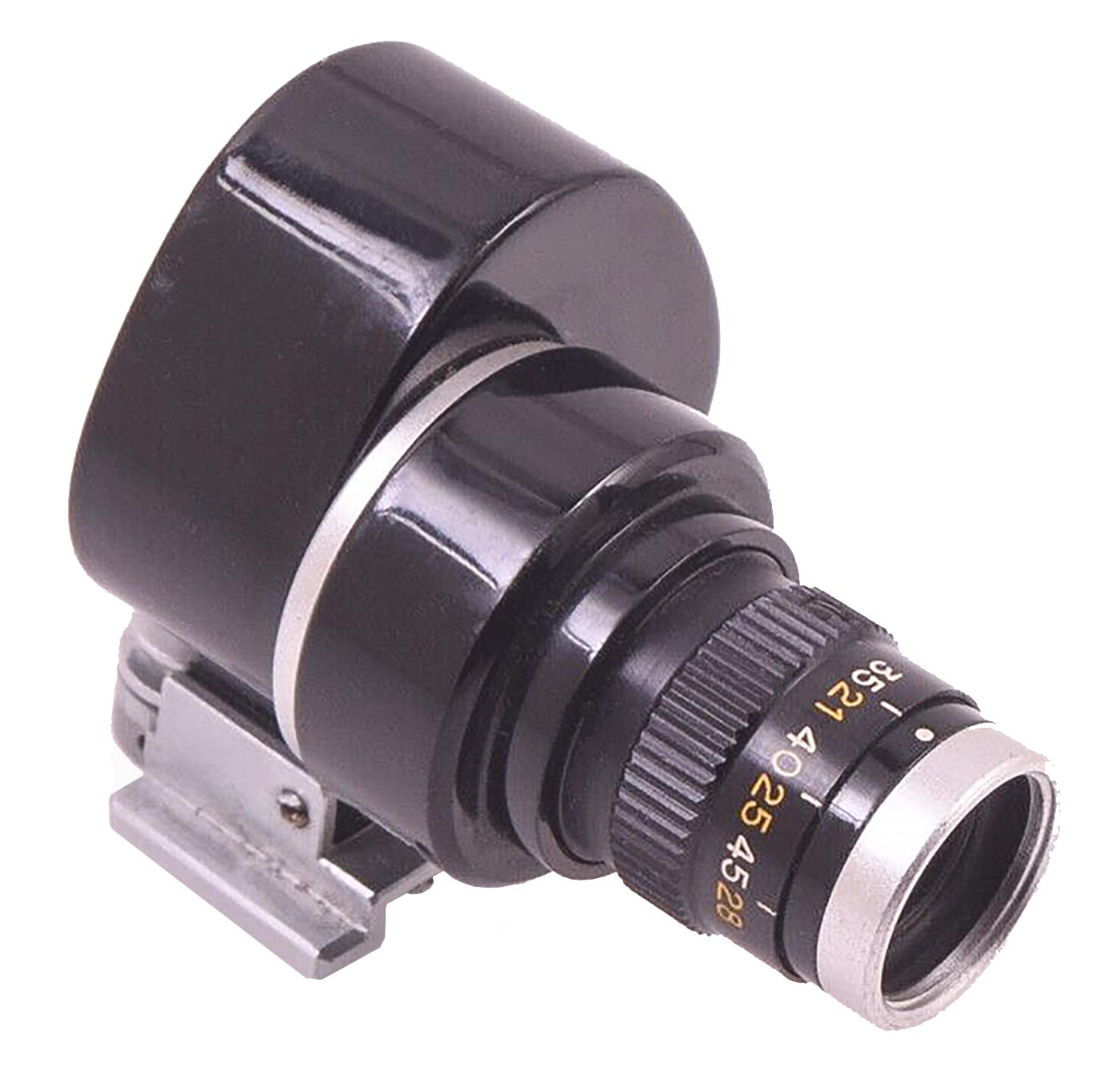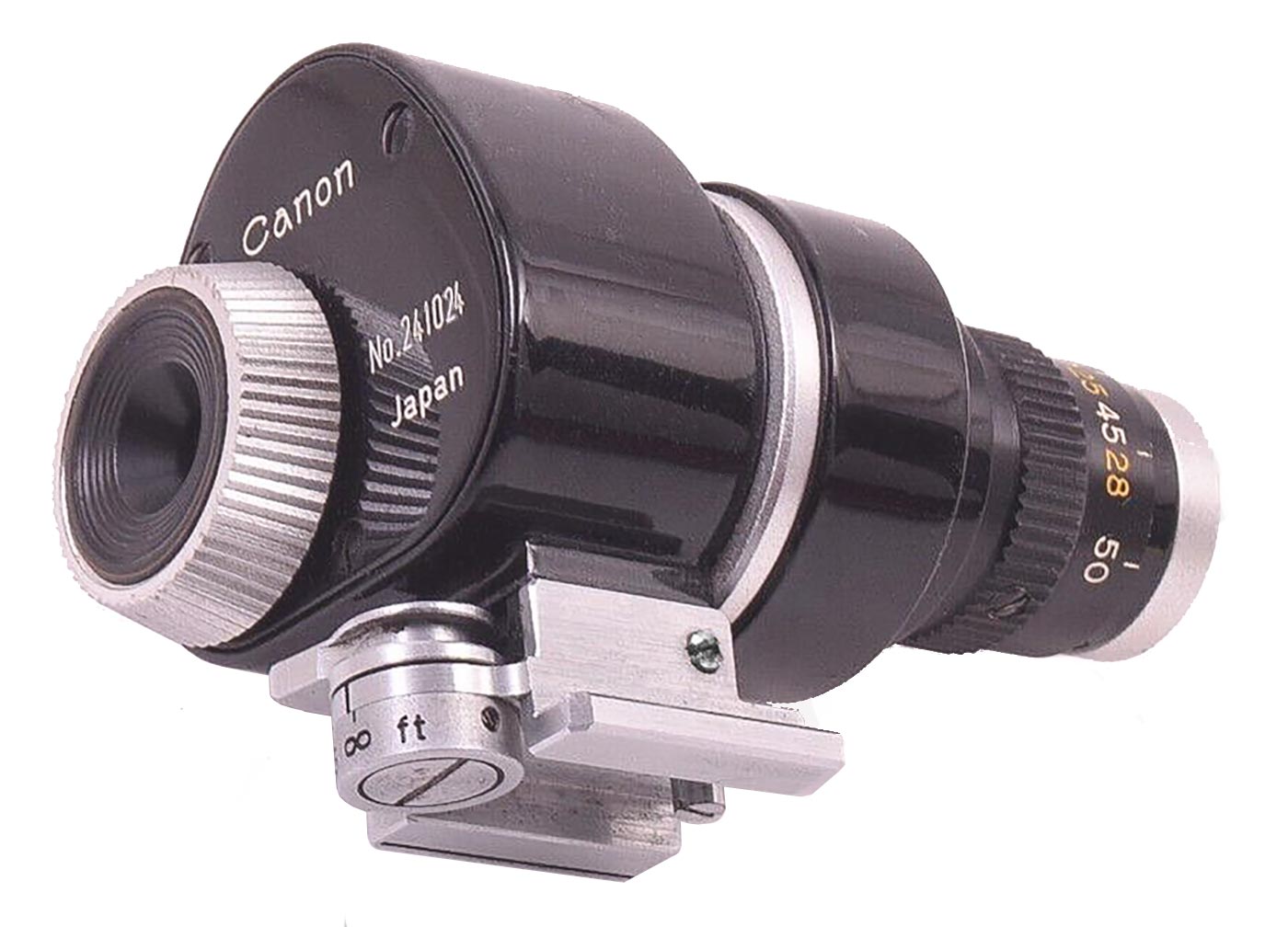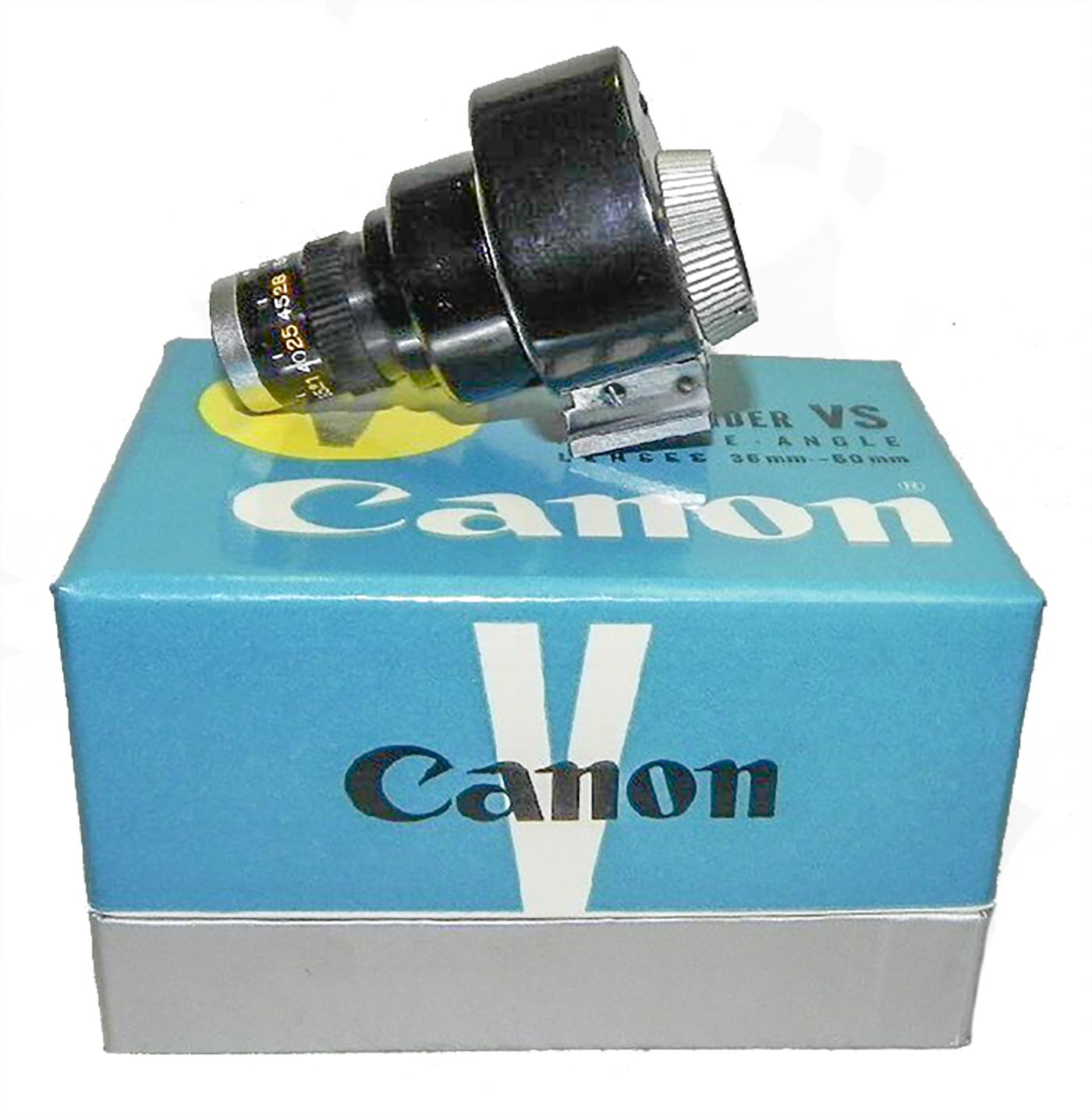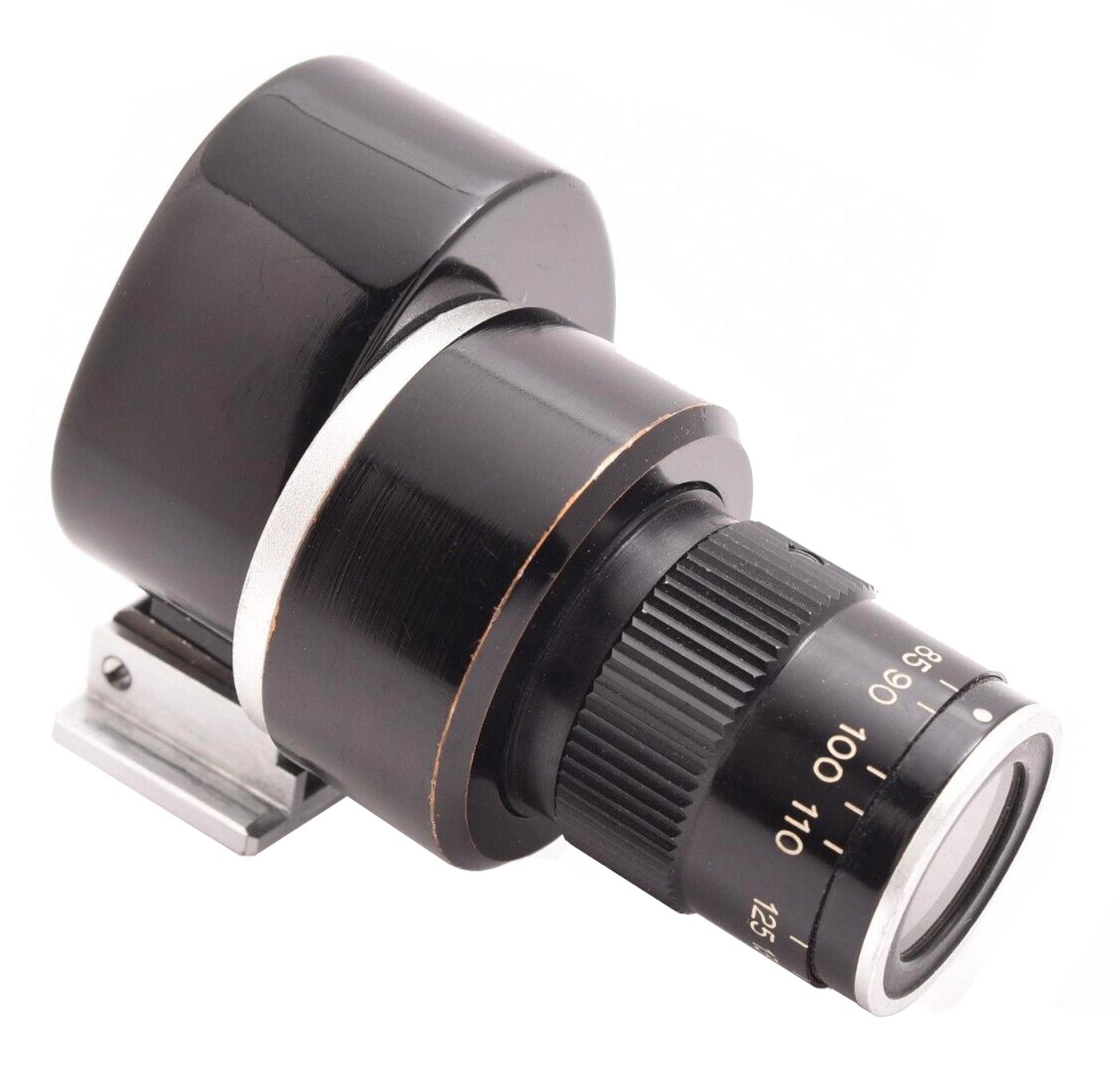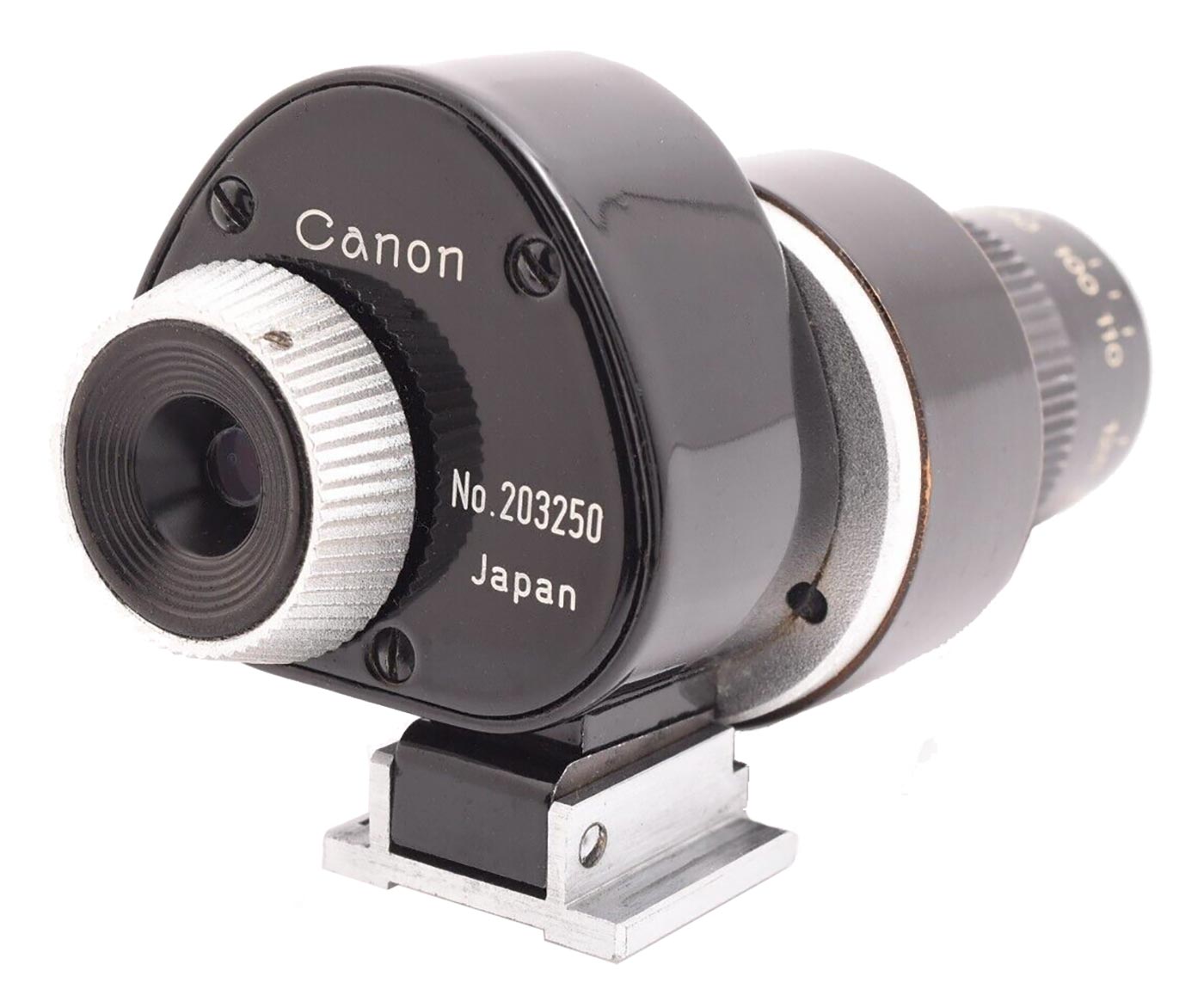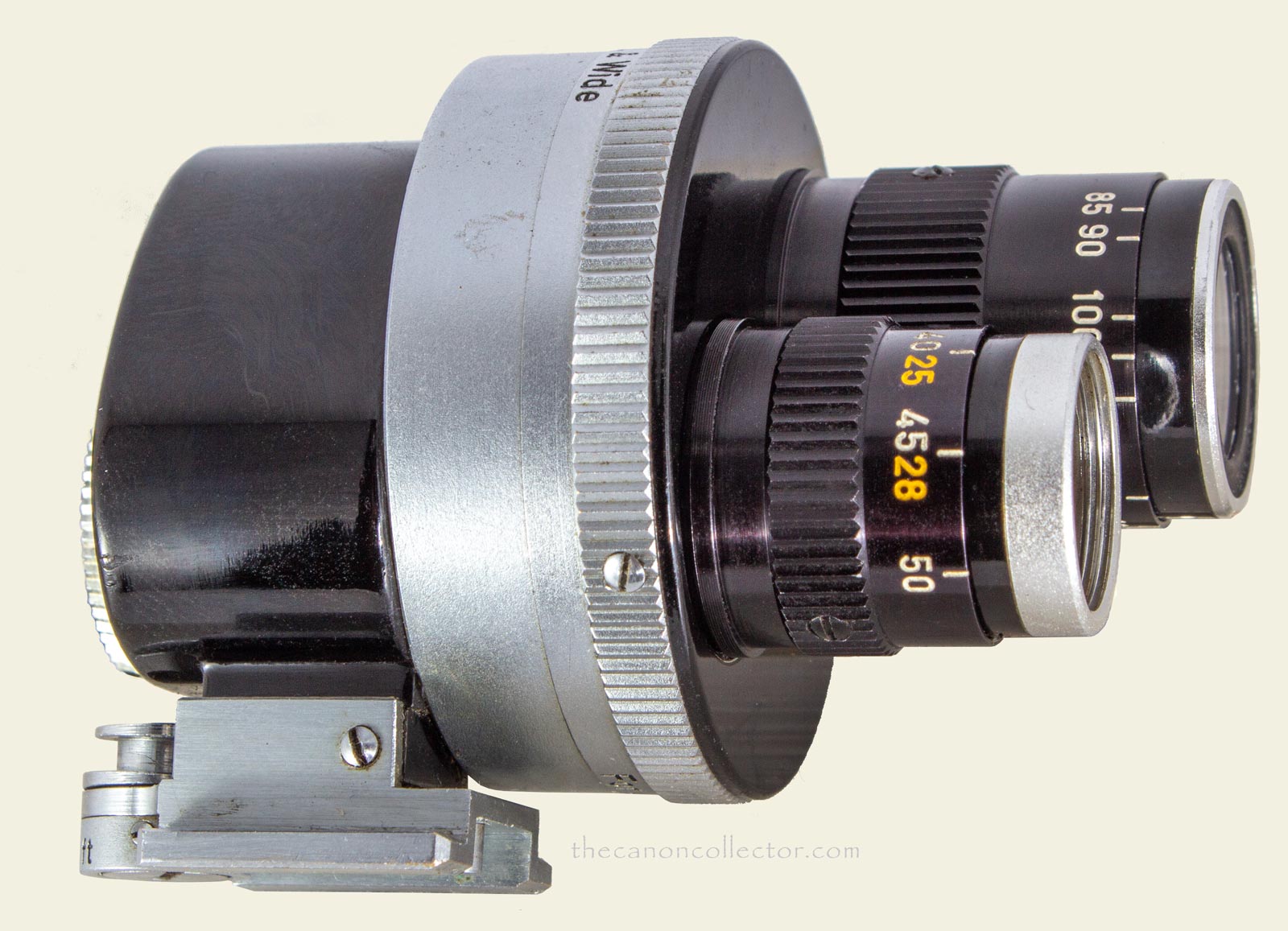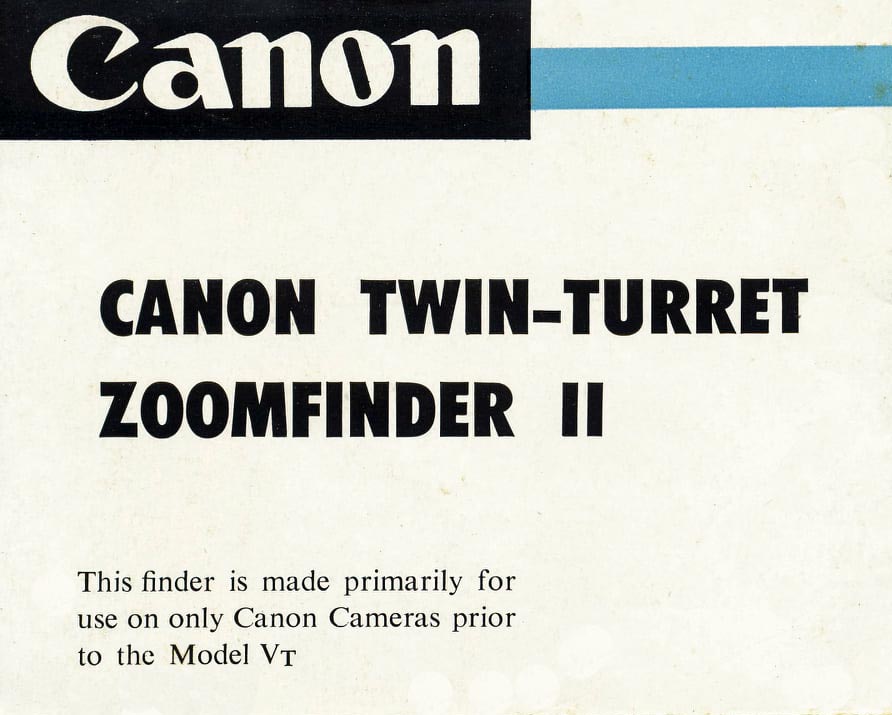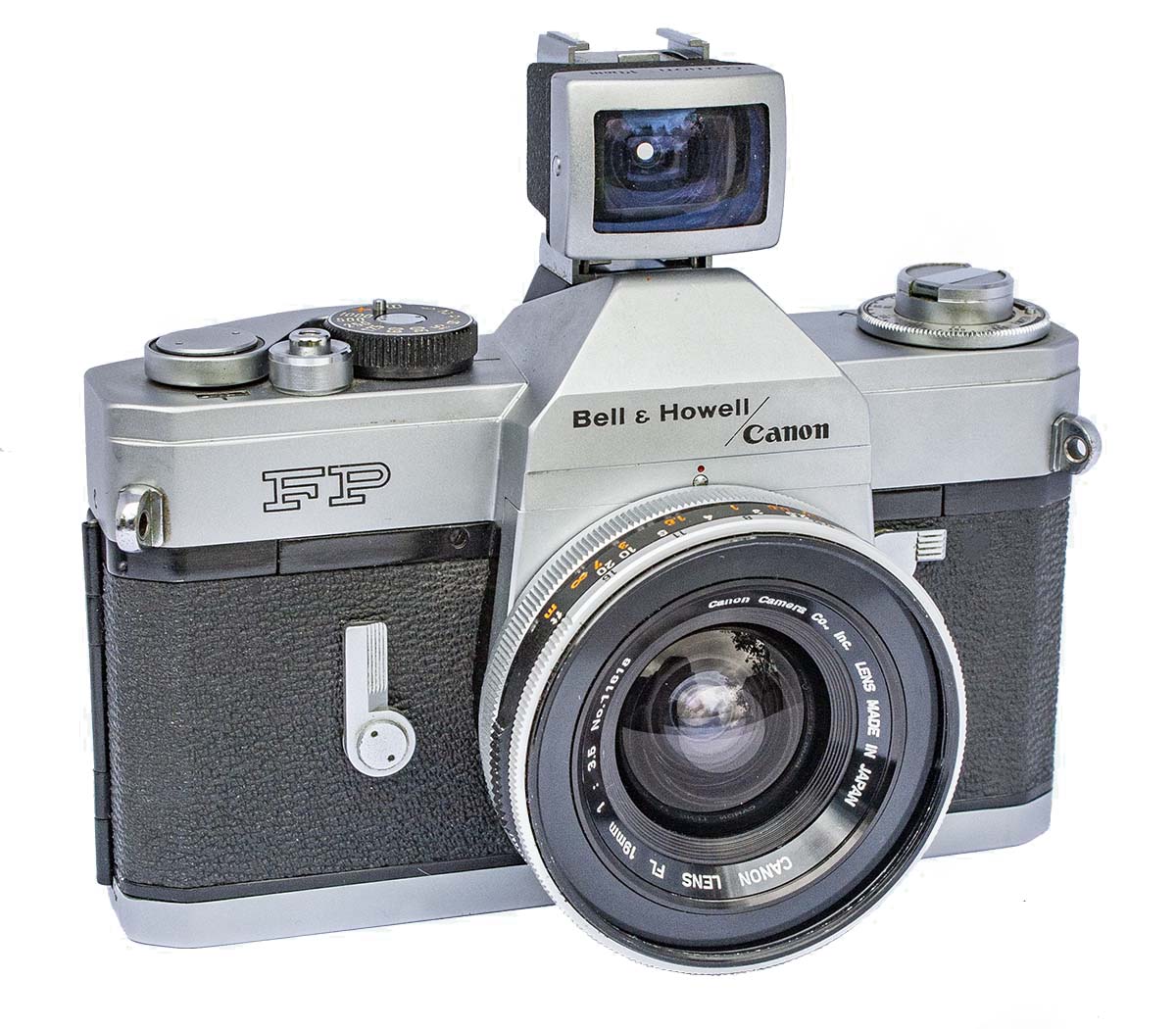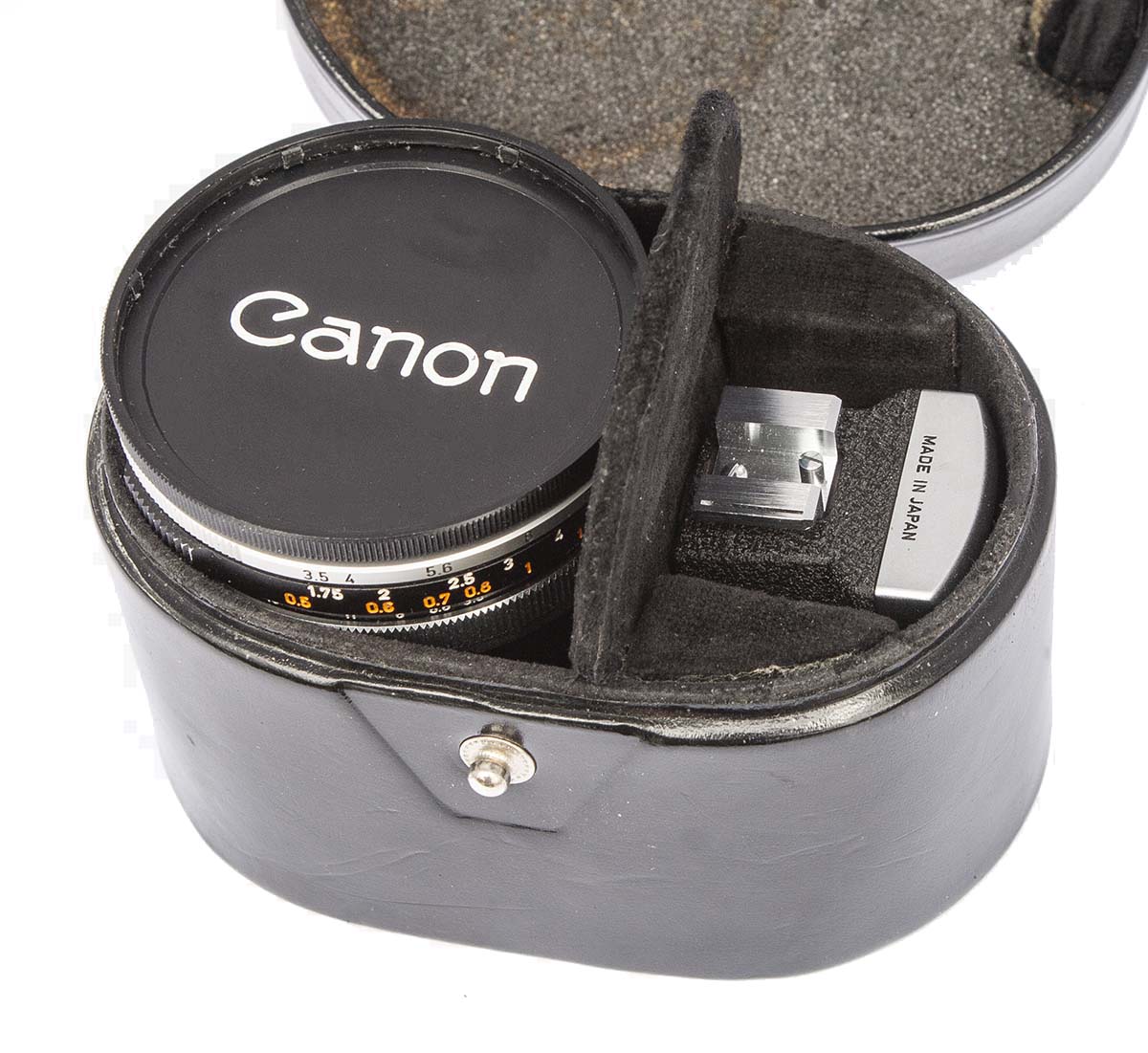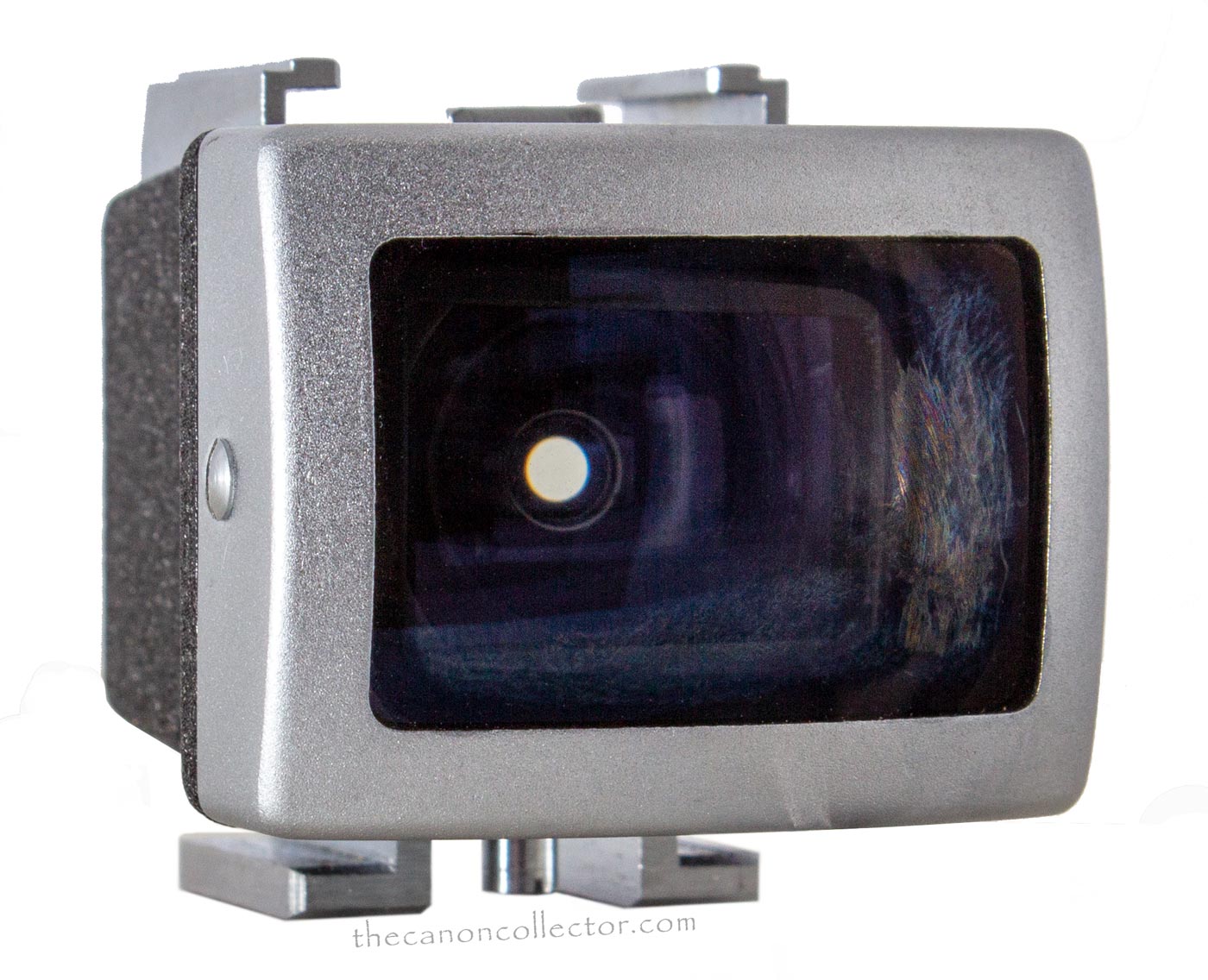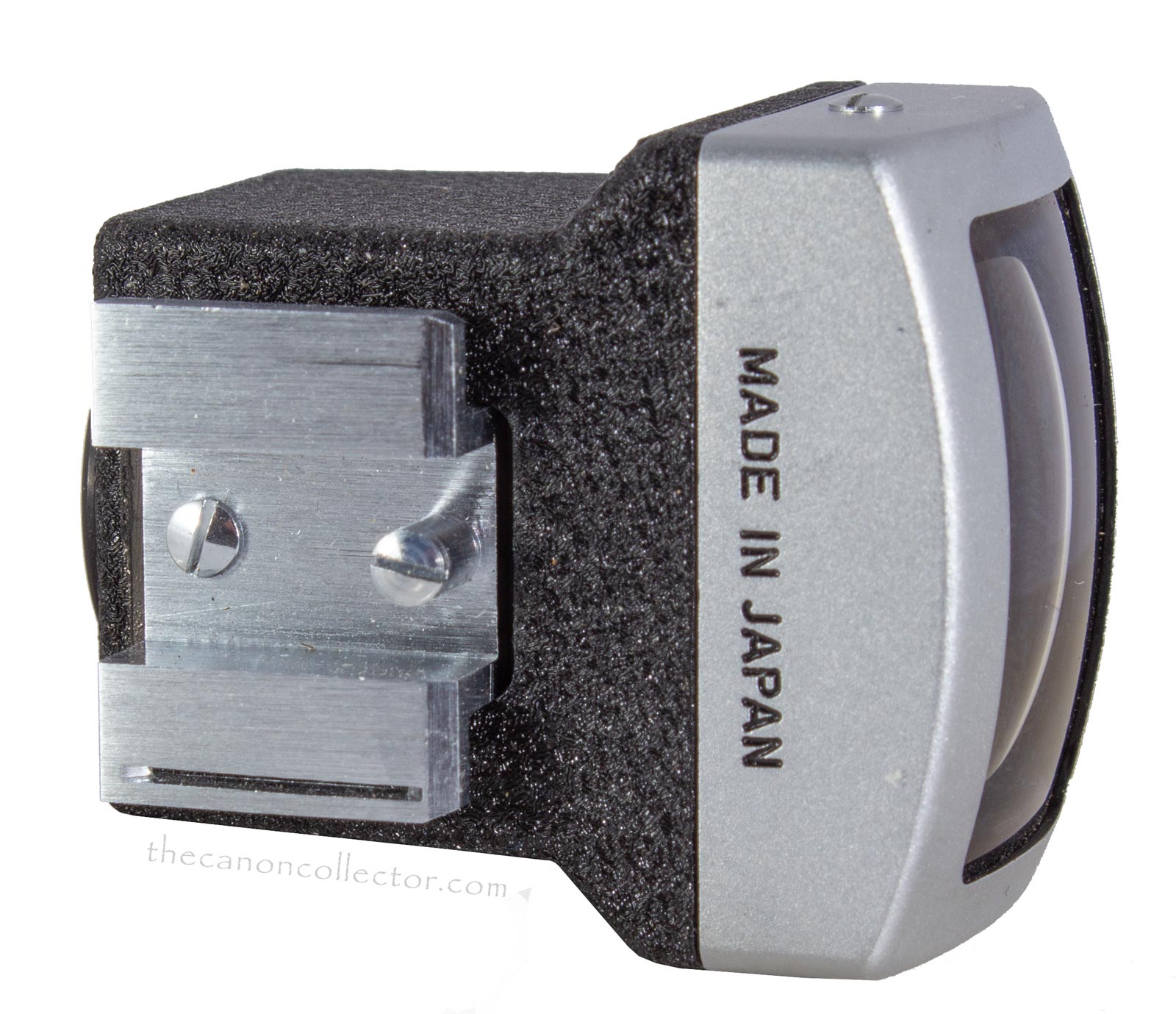Before the SLR the viewfinders on cameras were not always sufficient for the lenses available. The answer was to attach a more suitable viewfinder to the top of the camera.
Viewfinders
the accessory kind
The original Barnack Leicas had a view finder designed for the 50mm lens which was the original lens for these cameras. In the beginning there were very few lenses for the new 35mm cameras, however, as the camera became more popular the demand arose for wider and longer lenses. As these new lenses became available users had to interpolate or guess the image they would capture while looking through the viewfinder designed for 50mm lenses.
To provide a more satisfactory view of the final image manufacturers began creating viewfinders for various focal length lenses that would clip into the camera equipment shoe on the top of the camera body. These are the viewfinders we are looking at here.
Before we get into the viewfinders there is something else we have to discuss that bears on their design. Camera viewfinders have a problem because they are located above the lens. They don’t see quite what the lens does and this effect gets worse the closer the subject. It also gets worse the more the viewfinder is offset from the axis of the lens. And accessory viewfinders are located much higher than the built in viewfinder and so this effect is quite pronounced. It can be compensated for by tilting the viewfinder down as the subject comes closer to the camera.
If the axis of the viewfinder and the lens are parallel they will never see the same part of the view before them. The viewfinder must be tipped down slightly to bring the views into allignment. However, if the view in the distance is the same for both then the closer view will still be out of allignment. The amount of the “tipping” is different for every distance.
The earliest form of parallax adjustment is a dial on the viewfinder itself with distances to the object inscribed around it. Setting the distance on this scale tipped the viewfinder down the correct amount. For viewfinders without this adjustment Canon made a Parallax Compensator which fit into the camera shoe and the viewfinder fit into it. The distance could be dialed into this device and it would tip the viewfinder mounted in it.
We have a Newsletter
There is a Newsletter for thecanoncollector.com to keep you up to date on what we are posting. Try it!
Up until 1958 these were the methods available to correct for parallax. And then Canon introduced the Model VT in April of 1956 and everything changed. In the shoe of the VT, and subsequent rangefinder cameras, Canon placed a pin that rose and fell with the focusing of the camera. If a viewfinder was hinged at the back the front could rest on the pin and rise and fall with the focus distance of the camera: automatic parallax correction.
This is the traditional camera shoe found on Canon rangefineder cameras up to 1956 which has no provision for parallax correction.
After 1956 viewfinders were made without their own parallax correction because the cameras provided it. And Canon was clever in that the earlier viewfinder with its own parallax correction did not engage with the later automatic feature so they still functioned correctly in the newer cameras.
So, having cleared up the matter of parallax, we can now get on to discussing the various viewfinders themselves.
After 1956 viewfinders were made without their own parallax correction because the cameras provided it. And Canon was clever in that the earlier viewfinder with its own parallax correction did not engage with the later automatic feature so they still functioned correctly in the newer cameras.
So, having cleared up the matter of parallax, we can now get on to discussing the various viewfinders themselves.
The Seiki Albada clip-on viewfinder from 1938. Picture is from Page 69 of Ueyama Hayato’s wonderful source book “All About Seiki Optical Canon”
The very early Canon cameras, the Hansa, the Model S, the Model J of the late 30’s and early 40’s had poor viewfinders, at least by today’s standards. However, in the early 1930’s the Albada form of viewfinder was developed by a Dutch inventor by the same name and it gave an excellent image. It was quickly adopted by Leitz in Germany. The image produced was far superior to that of built in finders. We have already discussed this finder.
This was not lost on Seki Kogaku, as Canon was then known, and in 1938 they brought out their own version of the Albada view finder. It is a very close copy of the Zeiss 433/26 viewfinder. The Seiki Kogaku Albada viewfinder is discussed at page 69 of “All About Seiki Optical Canon” by Ueyama Hayato.
Apparently all components of the view finder were made by subcontractors and assembled by Seiki Kogaku. Apparently they ceased production with the coming of the American war.
The next viewfinder I find reference to is in the Jardine Matheson & Co. catalogue from about 1952. The date I surmize from the fact that the camera advertised is the IV-S which was introduced in April of 1952. If page 1 is the cover then on page 4 is a picture of the Universal Viewfinder on a IV-S.
The listing says “For use with Canon interchangeable lenses 35mm to 135mm. With 28mm Front Attachment, this may also be used with Canon’s 28mm extra-wide angle lens.”
Searching on E-bay I have come up with images of this viewfinder, some with parallax correction and some without. By noting the serial numbers for each type it appears that the earlier viewfinders up to about serial number 22000 have such adjustment and those beyond that number have none. Assuming that lower numbers come first, the early models, which I shall call First Model, are the ones in the catalogue. It seems to make sense that the adjusting mechanism was dropped with the introduction of the camera Model VT.
I have a Universal Finder but mine is a later one without parallax adjustment.
Page from the Manual for the Model III Rangefinder Camera
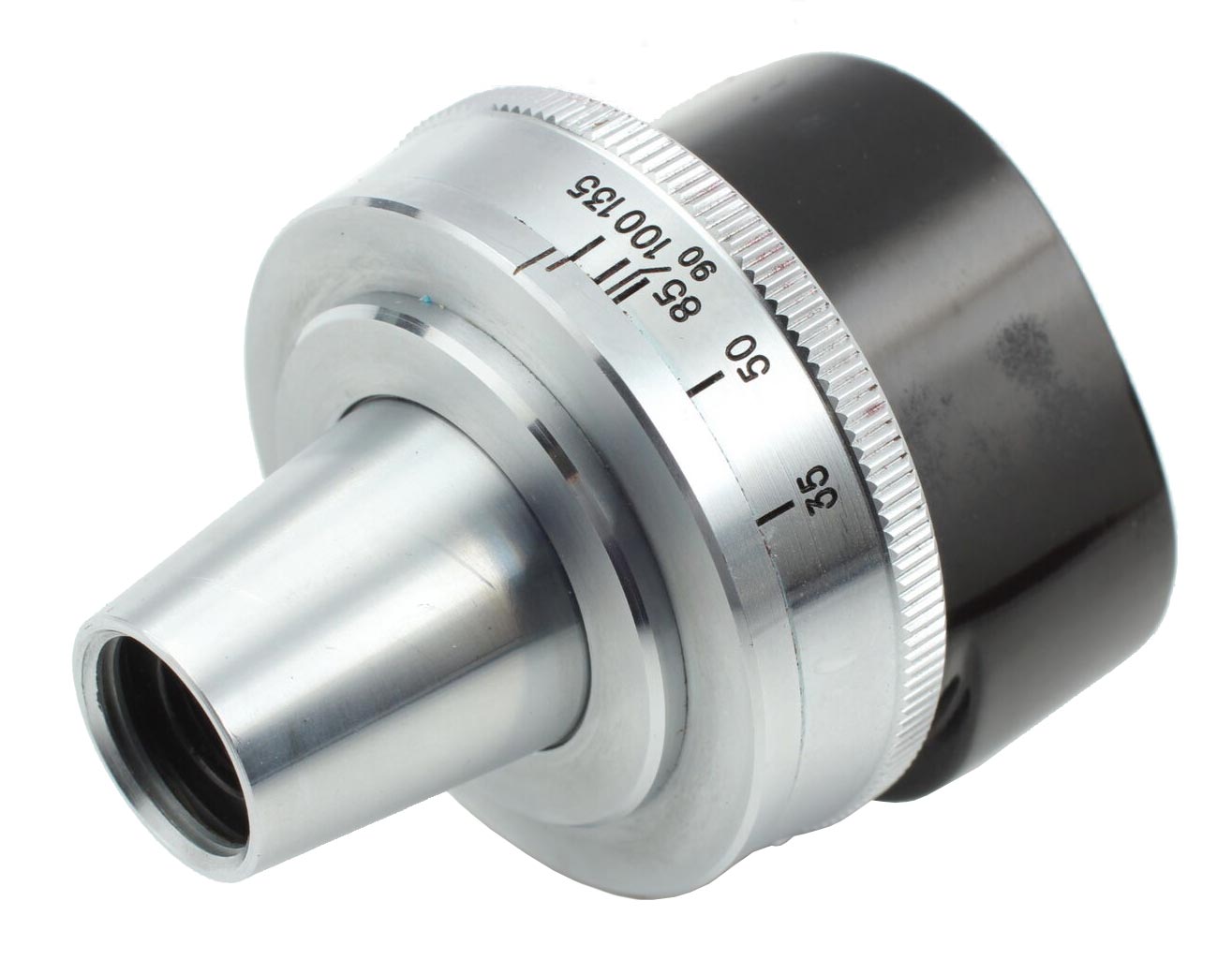
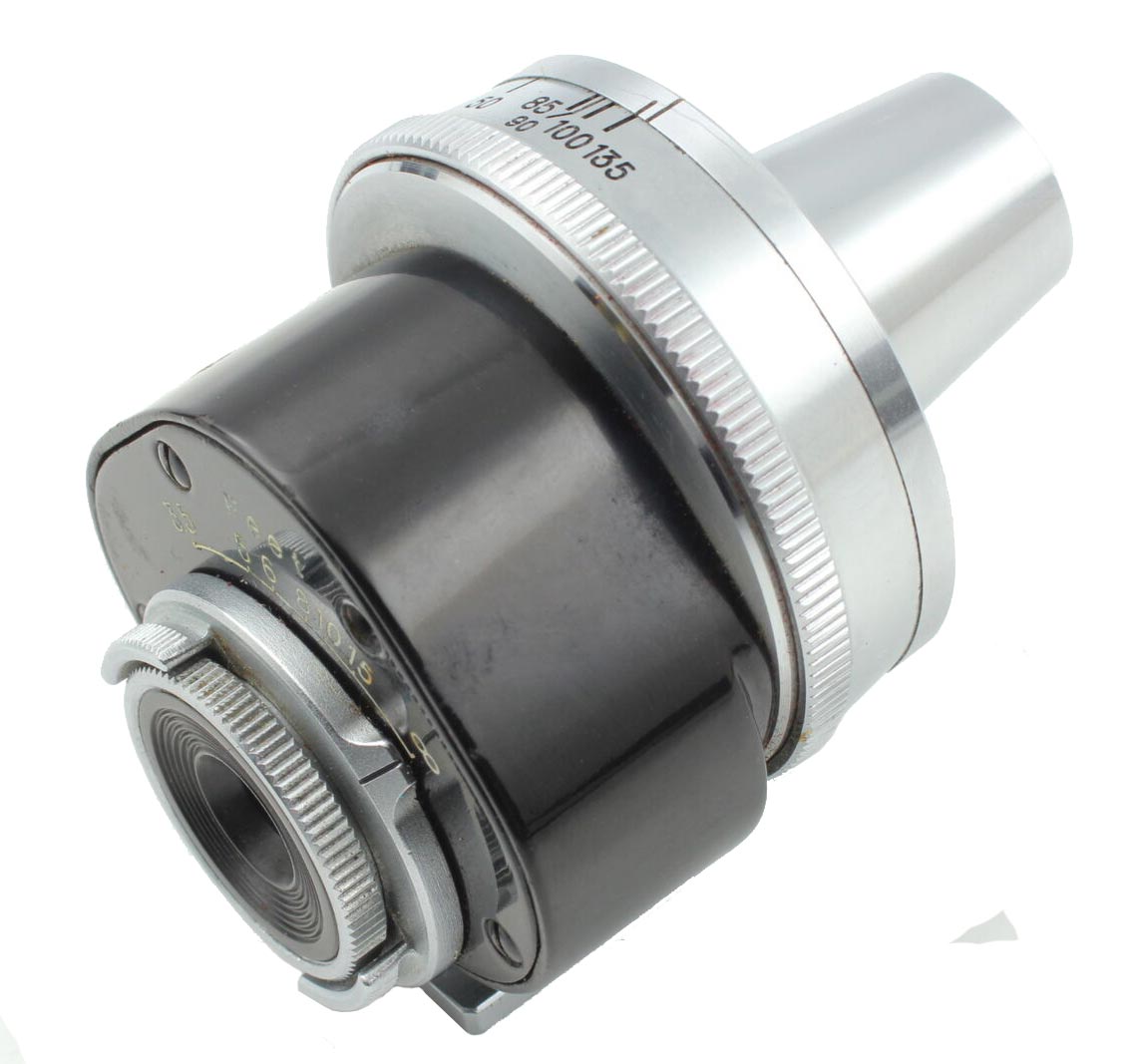
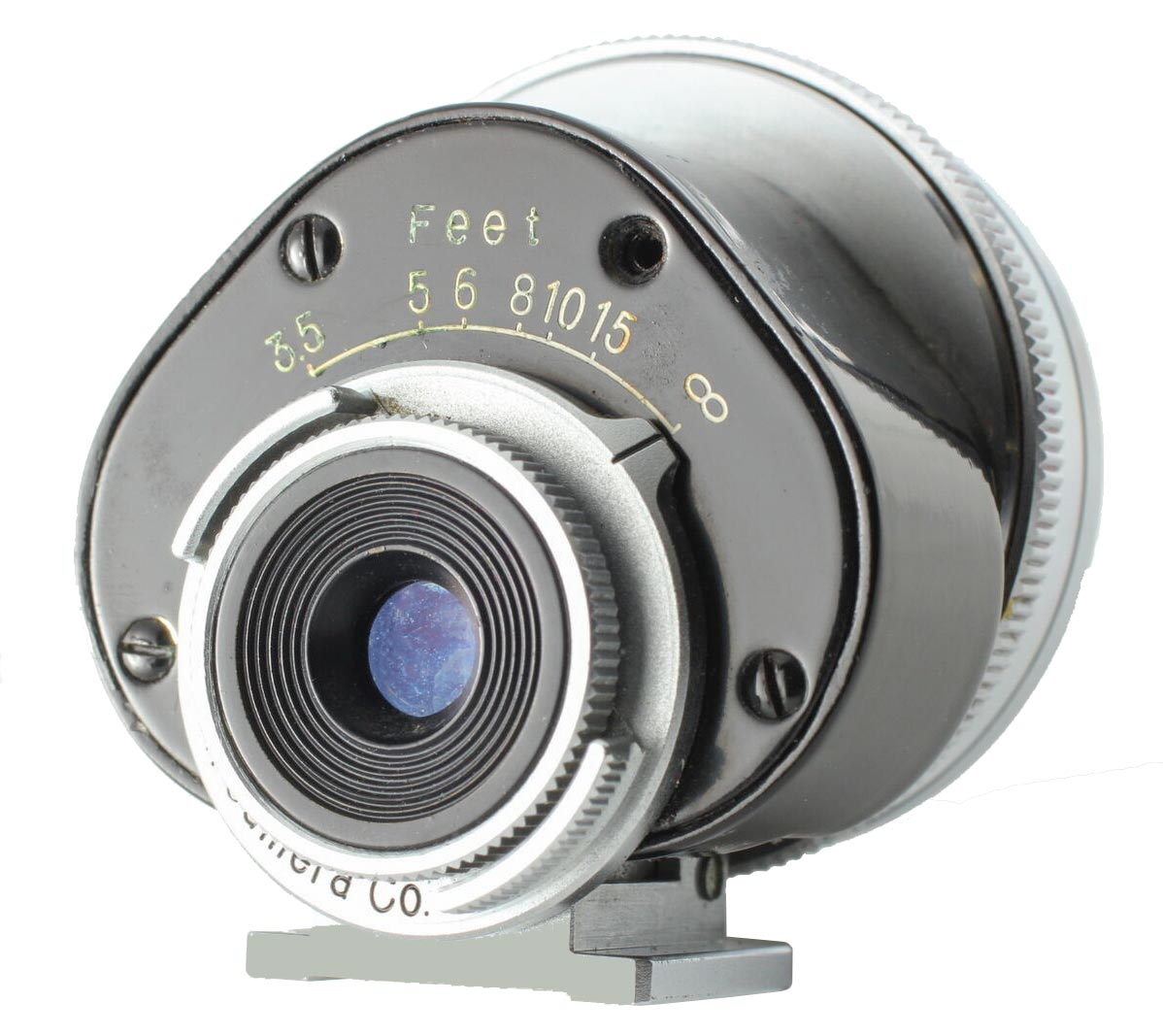
Looking through the Universal Viewfinder one sees the scene before the camera. As you turn the main dial, which is the whole housing, the frame grows or shrinks revealing more or less of the image. The size of the image does not change. As a result, at the 135mm end, the image is very small and you seem to be looking down a long dark tunnel. The viewfinder works as described but it is less than satisfying to use.
As we noted, the Jardine catalogue refers to a 28mm attachment that extends the range of the Universal Viewfinder to 28mm lenses. Again, I don’t have one of these but I have found images on E-bay of this device.
The Viewfinder lens is threaded to accept this add-on which actually looks pretty strange when it is mounted. But if you have nothing else ……
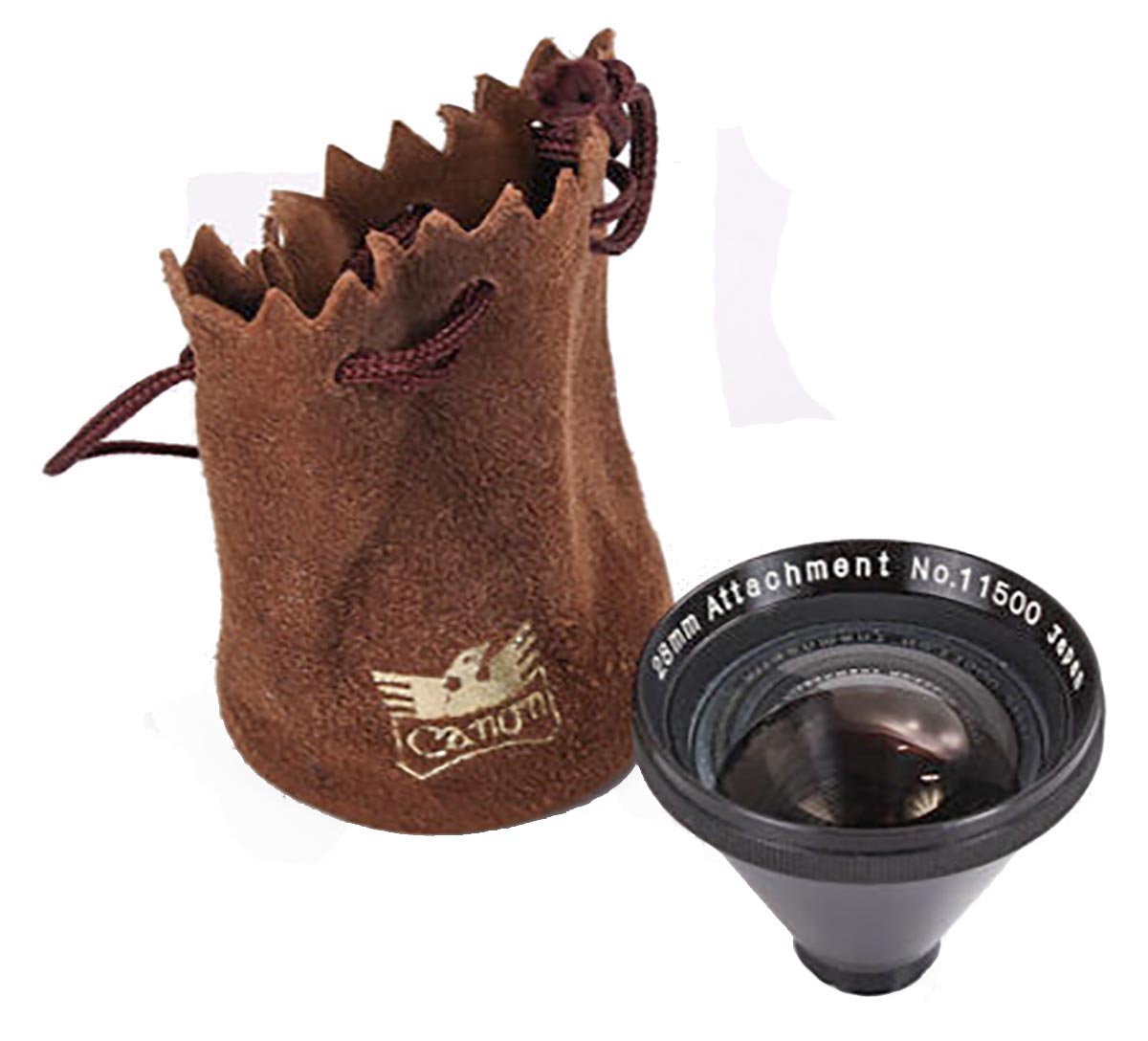
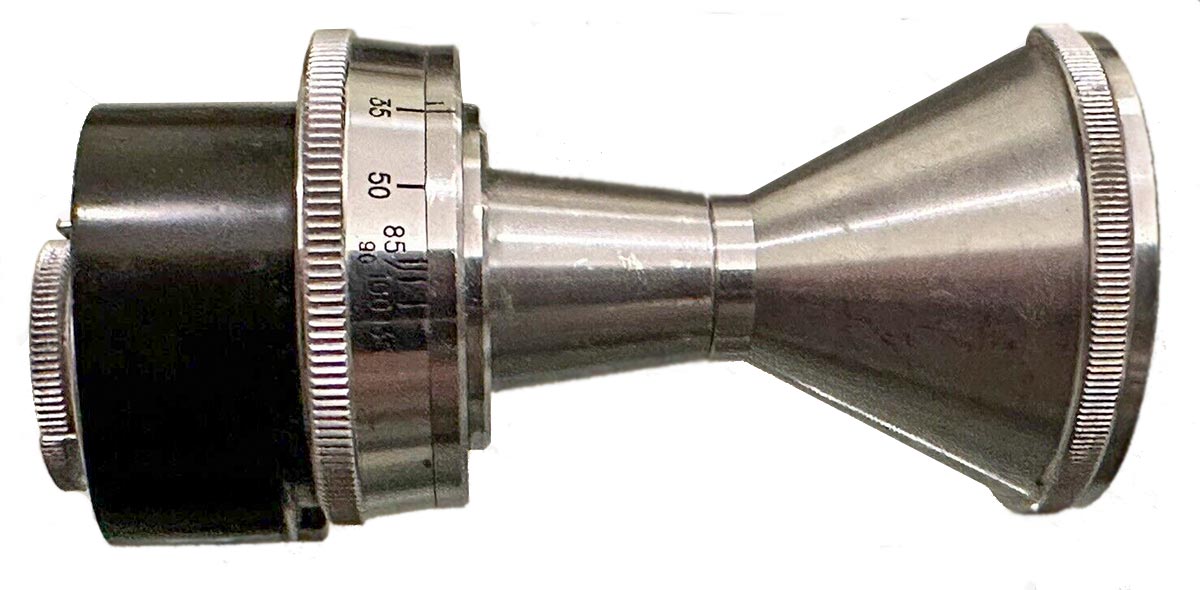
Two images found on E-bay which is an indispensable research tool.
The Universal Viewfinder V (Second Model)
We jump a little out of sequence here up to April of 1956 and the introduction of the Canon VT and its internal parallax compensation which we discussed above. For this and subsequent rangefinder cameras the parallax adjustment feature on the Universal Finder was no longer required and so it was dropped. The VT name actually meant Series V and the T stood for ‘trigger’ or the bottom wind mechanism that Canon was promoting. So this second model was also refered to as the Universal Viewfinder V. In all other respects this Second Model is the same as the previous one.
For backward compatibility, if you wanted to use the Second Model on an earlier camera you could purchase the Parallax Compensator shown above. Any viewfinder without parallax compensation could be used with this device.
The internal compensation of the Model VT and later cameras was designed so that viewfinders with their own compensation built in would not engage with it. They would continue to rely on their own compensation mechanism.
The Universal Viewfinder V has no distance scale on the back. It is pinned at the back of the shoe mount and the front rises and falls with the parallax adjustment pin in the Model VT Shoe.
On Page 28 of the 1955 catalogue shown below there is a listing for the Universal Frame Finder Model III. This is a ‘wire frame’ viewfinder intended for “fast moving action such as sports”. The idea is that you can use your peripheral vision to see what action is about to move into the frame thus making it easier to track subjects. The problem I see with it is that there is no ability to focus the camera while your eye is to this viewfinder. So it is practical if the action is at a fixed distance but most sports games are not like this. The action moves towards and away from the camera making accurate focusing very difficult, impossible if your eye is not looking through the rangefinder.
The listing I mention says it is Model III so presumably there were two earlier models. I have found three variations but I don’t know if these are the three or whether there are more out there. Two of them have frames for a 50mm and 135mm lens. The second has multiple frames that can fold down out of the way. The frames are for 50mm,85mm, 100mm, and 135mm lenses.
This is the simplest Universal Frame Finder. It has frames for 50mm and 135mm lenses and no provision for parallax correction. The wide eyepiece means that eye position changes the view and the scene and the frames cannot both be focused by the eye. One will be blurred.
The second one above is the same as the first but the eyepiece has a pinhole that can be positioned in the eyepiece. This will ensure the eye is in the correct position and, being a pinhole, it will improve the focus of the frames when the eye is focused on the scene in the distance.
I do not have any of these viewfinders as the only ones I have seen are very expensive and I have not been prepared to put out so much for so little. However, there are several available on E-bay where I found the images above.
The two Frame Finders above without parallax correction can be mounted in the Parallax Compensator discussed above which will permit parallax correction. This is pointed out on Page 16 in the General Catalogue of 28 March 1955.
Possibly the most common viewfinder is the ‘Special Viewfinder’ which
seems a poor name for such a workhorse. Prior to the introduction of the Model VT in 1956 these little viewfinders were
sold separately or together with the various Canon lenses except
for the 50mm lenses which did not require it. The camera bodies
all had 50mm viewfinders. As a result there are lots of these
available on the collector market.
The best description I have found for these is in the 1955 Canon Catalogue below starting on Page 28. They were available
for the 28mm, 35mm, 85mm, 100mm and 135mm lenses.
When they were sold with the lenses they were contained
in a small compartment in the lid of the leather lens case.
Parallax adjustment is dialed in on the collar around the eyepiece based on the distance indicated by the focused lens.
The Special Viewfinder mount is hinged in the front and as the parallax correction distance is dialed in the back of the viewfinder is moved up or down giving the correct parallax correction.
In April of 1956 Canon introduced the Model VT and along with it a redesigned style of lens with black and chrome finish. Along with the new lenses came the V series of Special Viewfinders. Like the new lenses they were black and chrome and these were designed to take advantage of the built in parallax correction of the Model V and later cameras and they had no built in parallax correction of their own.
On Page 28 of the Instructions for the L1, 2 and 3 Cameras the Special Viewfinders V are listed for the 25mm, 28mm and 35mm lenses. This confuses me because I have images of what appears to be a Viewfinder V for a 50mm lens. I have a lot more research to do here before I am sure I understand these viewfinders. But I need to look at more examples and find more manuals and catalogues.
This is a Special Viewfinder V for a 28mm lens. Note the lack of parallax correction on this viewfinder. The barrel of the viewfinder is hinged at the back so that the front can move up and down on the camera’s parallax correction pin. Looking at the bottom of the viewfinder, image on the right, you will see a domed pin. This pin slips up on onto the top of the parallax correction pin in the camera and as the pin in the camera moves up and down this pin on the viewfinder transfers that motion to the viewfinder barrel. (These are not my images but some I purloined from E-bay.)
It should be noted that earlier viewfinders with their own built in parallax correction are compatible with the Model VT and later cameras because they do not engage the parallax correction pin in the camera shoe of the later cameras. They ride above it. Those should be used using their built in rangefinder correction.
Before we leave the Special Viewfinders V, I have found what appear to be these same viewfinders with their own parallax correction. So far I have found no explanation for this and I can only assume that Canon made the new style of viewfinder but backward compatible with cameras that did not offer internal compensation, i.e. cameras coming before the VT.
These three images are of what appears to be a 35mm Special Viewfinder V but it has its own parallax correction. This would allow it to be used on the VT and later cameras but also on the earlier rangefinder cameras from Canon. I have found no reference material for these viewfinders. (These are not my images but some I purloined from E-bay.)
You will find reference to the Lumi-Field Viewfinders on Page 28 of the VT de Lux User Manual. Apparently they are made for the 50mm, 85mm, 100mm,and 135mm lenses (also on Page 28 of the L1-L2-L3 User Manual above). I have the one for the 135mm lens which is shown in these pictures.
Looking at this viewfinder it appears very different. Looking through it the 135mm frame outline appears to float over the scene and it is very independent of the position of the eye. The frame lines appear to be deposited on the inside of the
This is my Lumi-Field 135mm Viewfinder mounted on my Model L3 with the Canon Lens 135mm f/3.5. The Viewfinder has no provision for parallax correction and must rely on the camera’s compensation mechanism.
eyepiece lens. And the back of the front lens is silvered. Sound familiar? This Viewfinder is a variation of the Alibada viewfinder we discussed earlier.
The front element is silvered on the back except for the rectangle throuh which the scene is viewed.
It seems that Canon also issued the Lumi-Field viewfinder with its own parallax correction lever on the back of the finder under the eyepiece. Distance was given in both feet and meters.
These viewfinders could be used on pre-VT cameras but they were also be able to function on the VT or subsequent cameras because they would not engage with the camera bodies own internal parallax compensation.
Canon Zoomfinder
We discussed the Universal Viewfinder above. Unfortunately, the view it gave was of a fixed size and the frame expanded and contracted. So at the 135mm lens end the view was a tiny frame at the end of a long dark tunnel. It worked but it was not terribly impressive.
The solution to this was to create a viewfinder that had an actual zoom lens so that the view of the image expanded and contracted and the frame was constant. And so we have the Universal Zoom Finder.
The earliest reference I have to these is on page 18 of the ‘Canon System of Photography’ from March 1st 1956. There were actually 2 viewfinders; the Long Focus Model ‘L’ for 135mm to 85mm and the Short Focus Model ‘S’ for 35 to 55mm.
The Zoomfinder S went from 35mm to 50mm but there was an attachment for it that changed the range to 21mm to 28mm which were indicated on the barrel in yellow letters. Unlike the attachment for the Universal finder which only added a single new focal length, this attachment gave a range of added focal lengths because the viewfinder lens was a true zoom lens.
The Zoomfinder had its own built in parallax compensation. Distance was set on the scale by moving the lever at the back of the shoe mount.
This image is of the Zoomfinder S which had two scales, white for use without the wide angle attachment, and yellow for the attachment.
Canon Zoomfinder V
With the introduction of the ‘V’ Cameras in April of 1956 the necessity for parallax adjustment on the viewfinder was negated. Canon reissued the Zoomfinder without the parallax adjustment lever. Otherwise it was the same device.
Both versions of the Zoomfinder S accepted a wide angle attachment that converted it to a 21mm to 28mm viewfinder. On the lens barrel of both there are two sets of focal length marks. The white numerals are for the viewfinder without the attachment. The yellow numbers indicate the focal length with the wide angle adapter mounted on the lens.
The Universal Viewfinder also had such a wide extension but it only added a 28mm focal length. Because the image could not be zoomed the added lens attachment only yielded one fixed focal length.
Twin-Turret Zoomfinder
The problem with the Zoomfinder was the fact that one had to have two of them to cover the whole range of focal lengths from 21mm to 135mm. The obvious solution was to combine the two lenses ranges into one rotating turret viewfinder. The result was the Twin-Turret Zoomfinder.
There were apparently two versions of the Twin-Turret Viewfinder, the original one and the Twin-Turret Zoomfinder II. The II version had its own built in parallax correction. This is the one I have which is
pictured here.
The first one, presumably the Zoomfinder I, has no built
in Parallax Correction and relies on the internal parallax
correction of the later, post VT model, rangefinders.
Kitchingman says there was a version without its
own parallax correction for VT and later models that relied
on those camera’s internal automatic parallax correction.
I have been unable to find a picture of one anywhere.
Below the eyepiece, which turns to correct focus for different users, is a lever and distance scale to for parallax correction.
The shorter lens is for 35mm to 50mm lenses. The yellow scale on the barrel are the focal lengths with the Front Attachment Lens
Special Viewfinders
This is my Canon FP SLR with the FL 19mm f/3.5 lens and 19mm Viewfinder. There is no provision in camera or viewfinder for parallax correction. Possibly not necessary with such a wide lens.
My FL 19mm f/3.5 lens in its box with the 19mm viewfinder.
There is a viewfinder that does not fit in any of the categories that we have discussed. There may be others but this, so far, is the only one I am aware of. It was made for the FL 19mm f/3.5 lens and
sold packaged with it. I wrote about this lens earlier.
This lens was first seen on Canon’s rangefinder cameras and
later mounted in an FL lens mounting for the new ‘F’ Series
of SLR’s. Because the lens protruded so far into the mirror
box it could only be used with cameras with Mirror Lockup such
as the FX or FP. This meant that the camera’s viewfinder
would not have been available and the shoe mounted
viewfinder was required.
The viewfinder was sold with the FL 19mm lens. It was
packaged with the lens in a black leather velvet lined case
in its own separate compartment.
When originally offered as an M-39 rangefinder lens it was the
last of Canon’s M-39 lenses. Kitchingman talks about this version of the lens at Page 36 and 37 of his very excellent book. However, he does not discuss parallax correction. Being introduced in 1964 it was obviously intended for the Canon Model 7 which had internal parallax correction. That viewfinder undoubtedly took advantage of the parallax correcting pin in the camera shoe. But I have not examined one so I don’t really know. We will have to leave that for a future update.
The FL lens version has no parallax adjustment built into the unit. The mounting foot is firmly attached to the body of the viewfinder and is not pivoted so it cannot tilt. When it is mounted in the camera shoe it is immovable.
The uniqueness of this viewfinder for the FL lens becomes apparent when you examine it closely. Firstly, as I have already said, there is no parallax correction ability in the viewfinder. And of course the SLR cameras have no need of it so they are built without separate means of parallax correction. So this viewfinder does not fall into any category we have discussed to this point.
Are there other special viewfinders? I don’t know of any, other than the one mentioned for the 19mm M-39 lens, but that is no test. There may actually be others.
This 19mm viewfinder has a shoe mount foot firmly fixed to the bottom and an accessory shoe on the top. It has no provision for parallax adjustment but I think with such a wide lens this is not really required.
A Final Note
The above is only a summary of a very interesting topic. There is a great deal I don’t know and am guessing at and I expect to update this page as I learn more. And I am sure there are variations of each model but, again, it is impossible for me with the time available to pursue them all.
This website is the work of R. Flynn Marr who is solely responsible for its contents which are subject to his claim of copyright. User Manuals, Brochures and Advertising Materials of Canon and other manufacturers available on this site are subject to the copyright claims and are the property of Canon and other manufacturers and they are offered here for personal use only.

